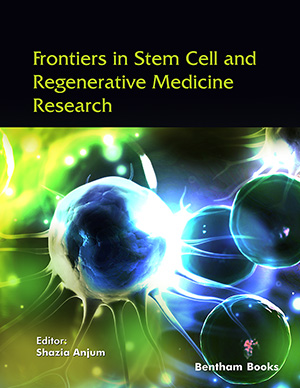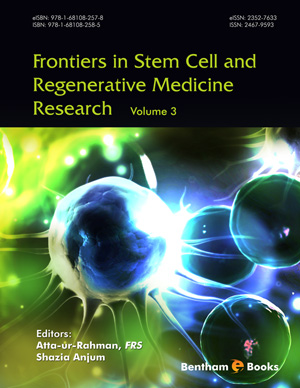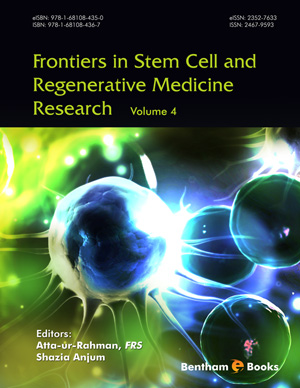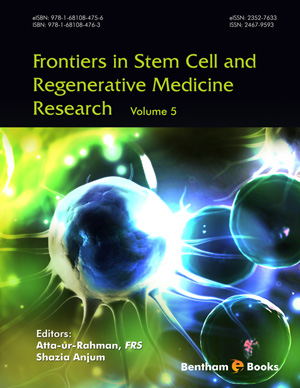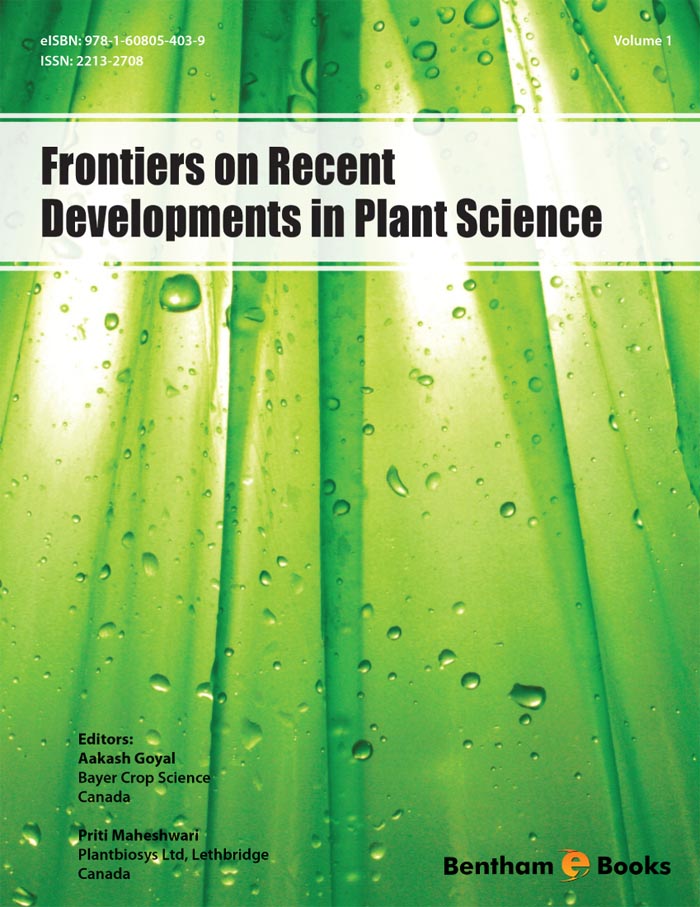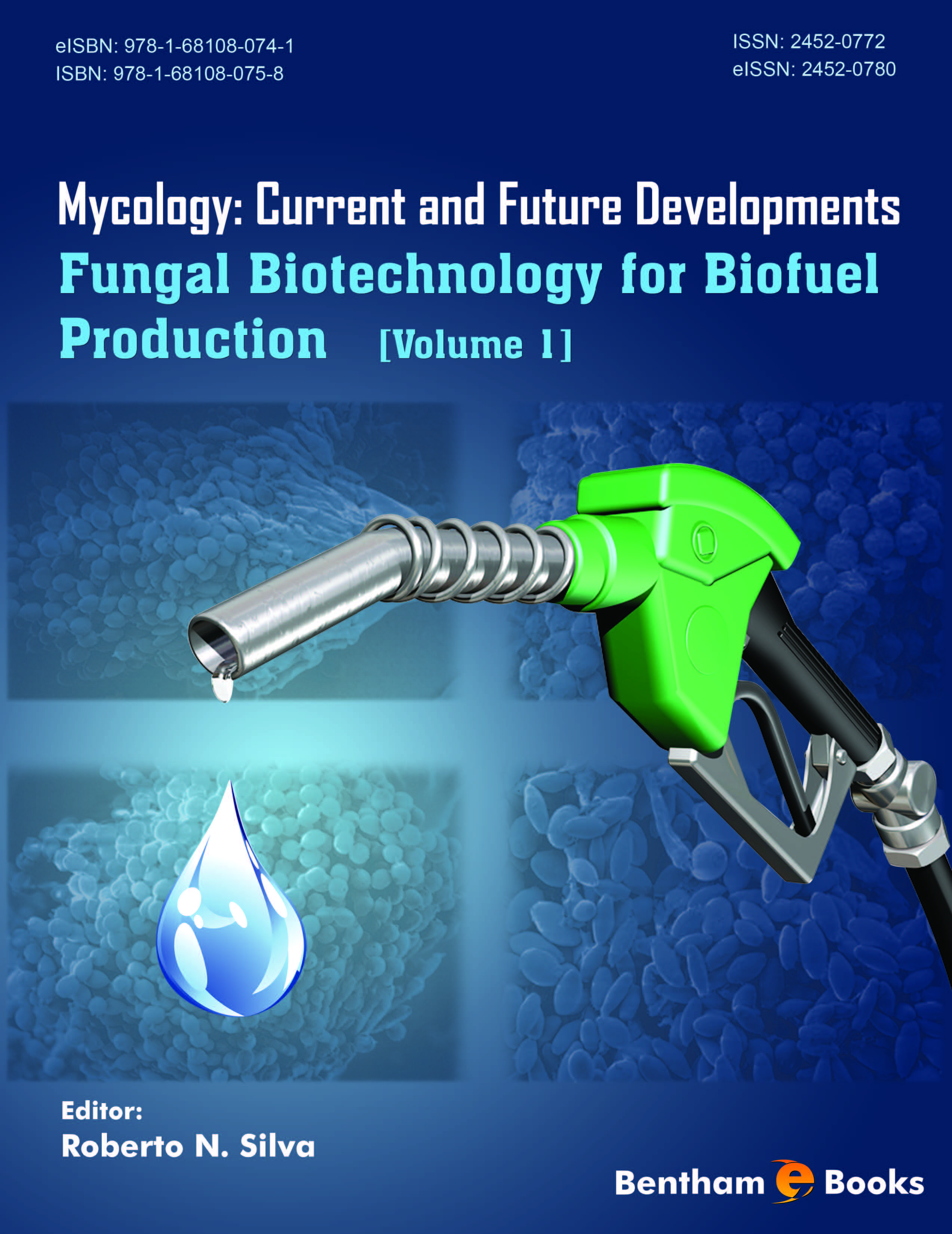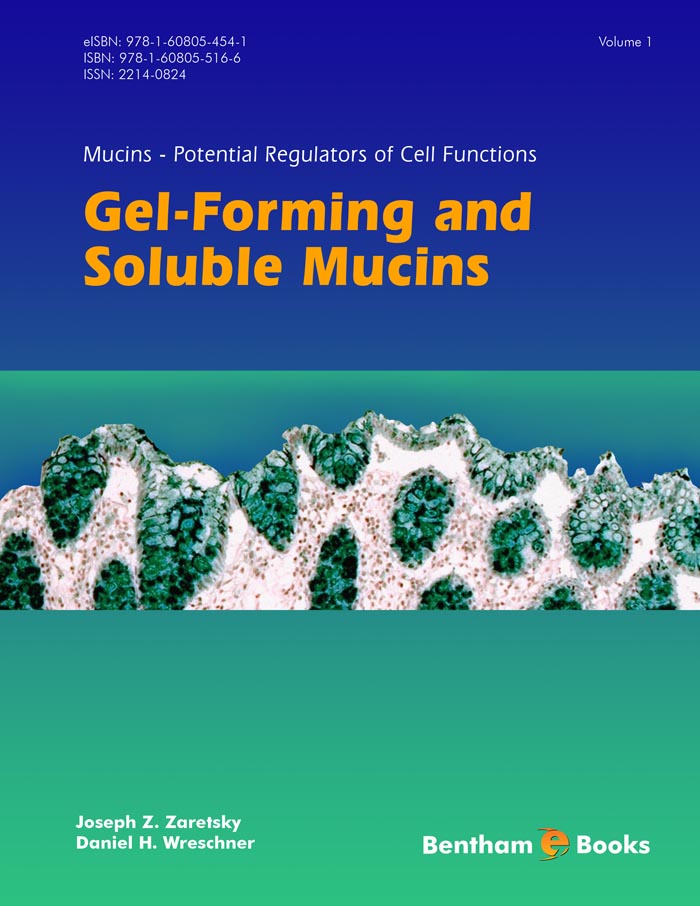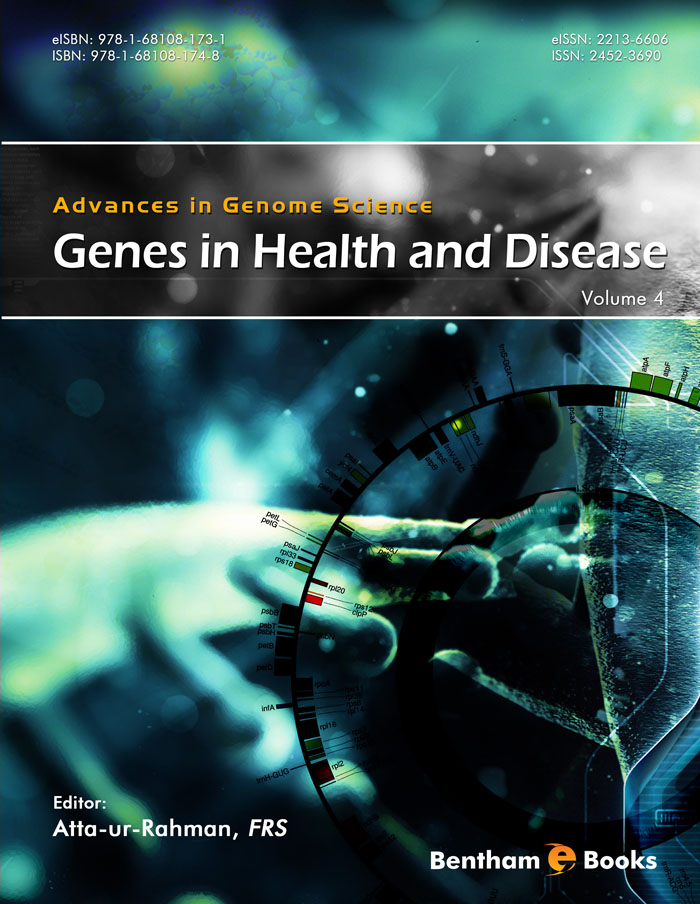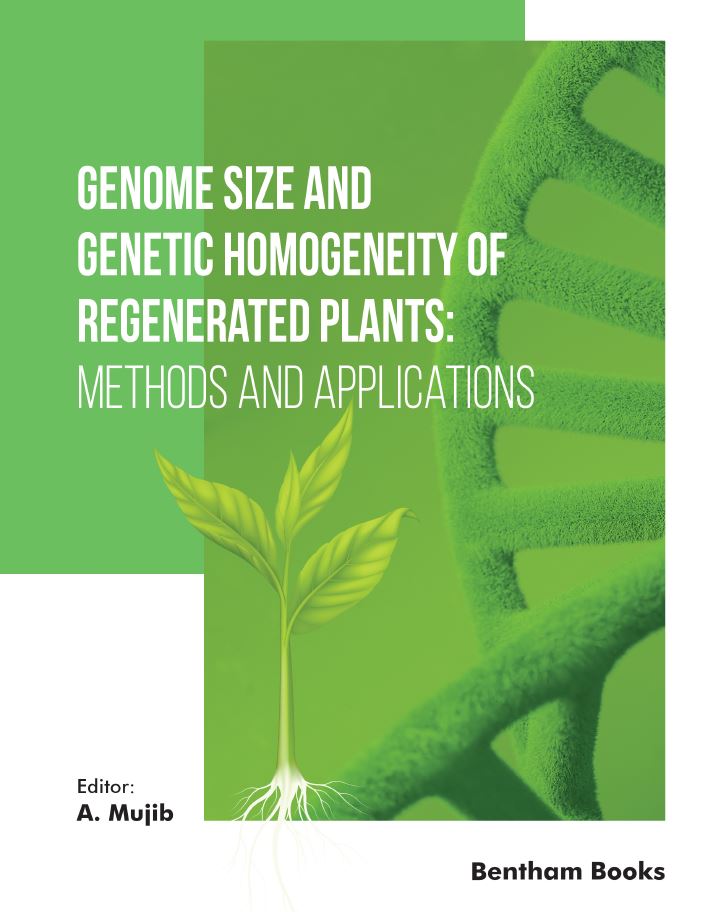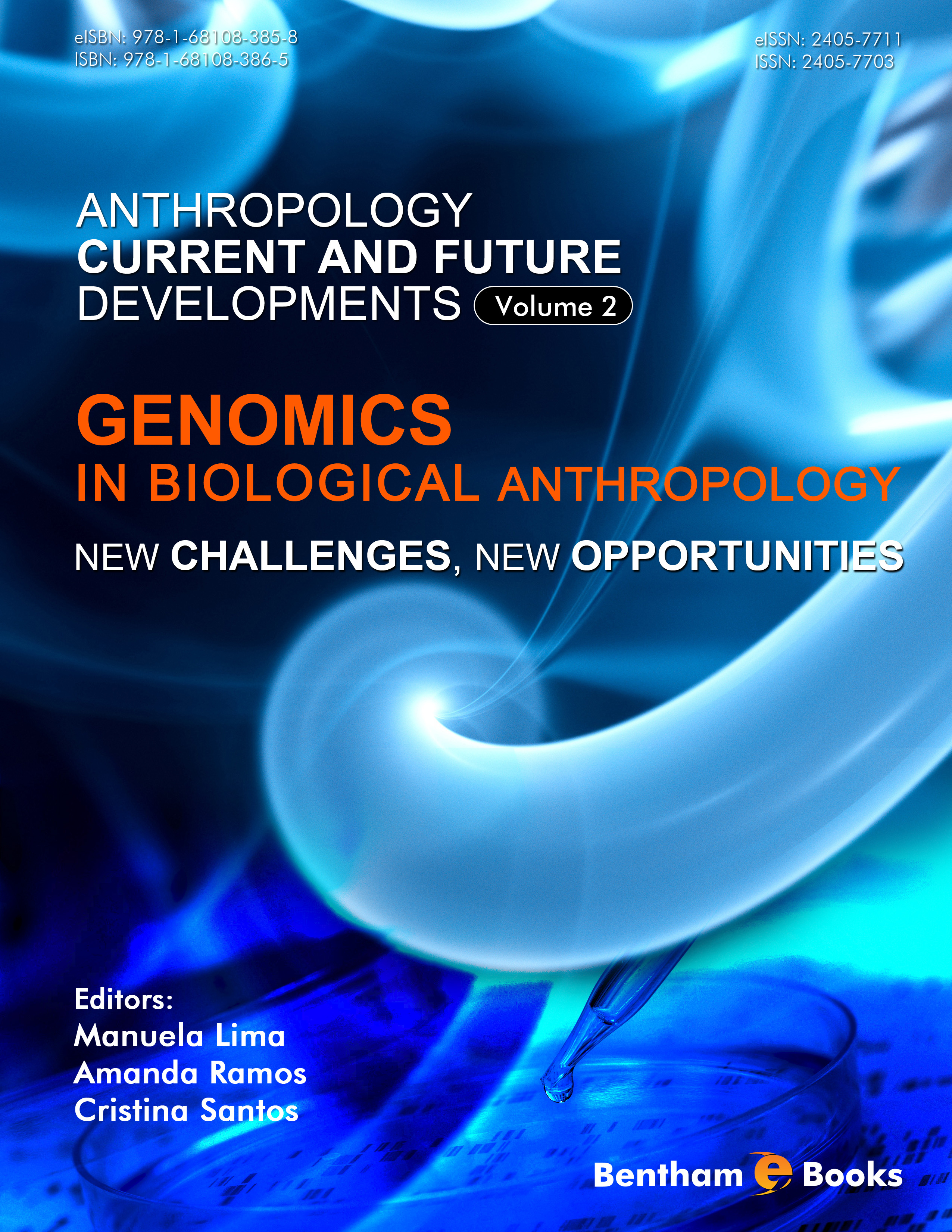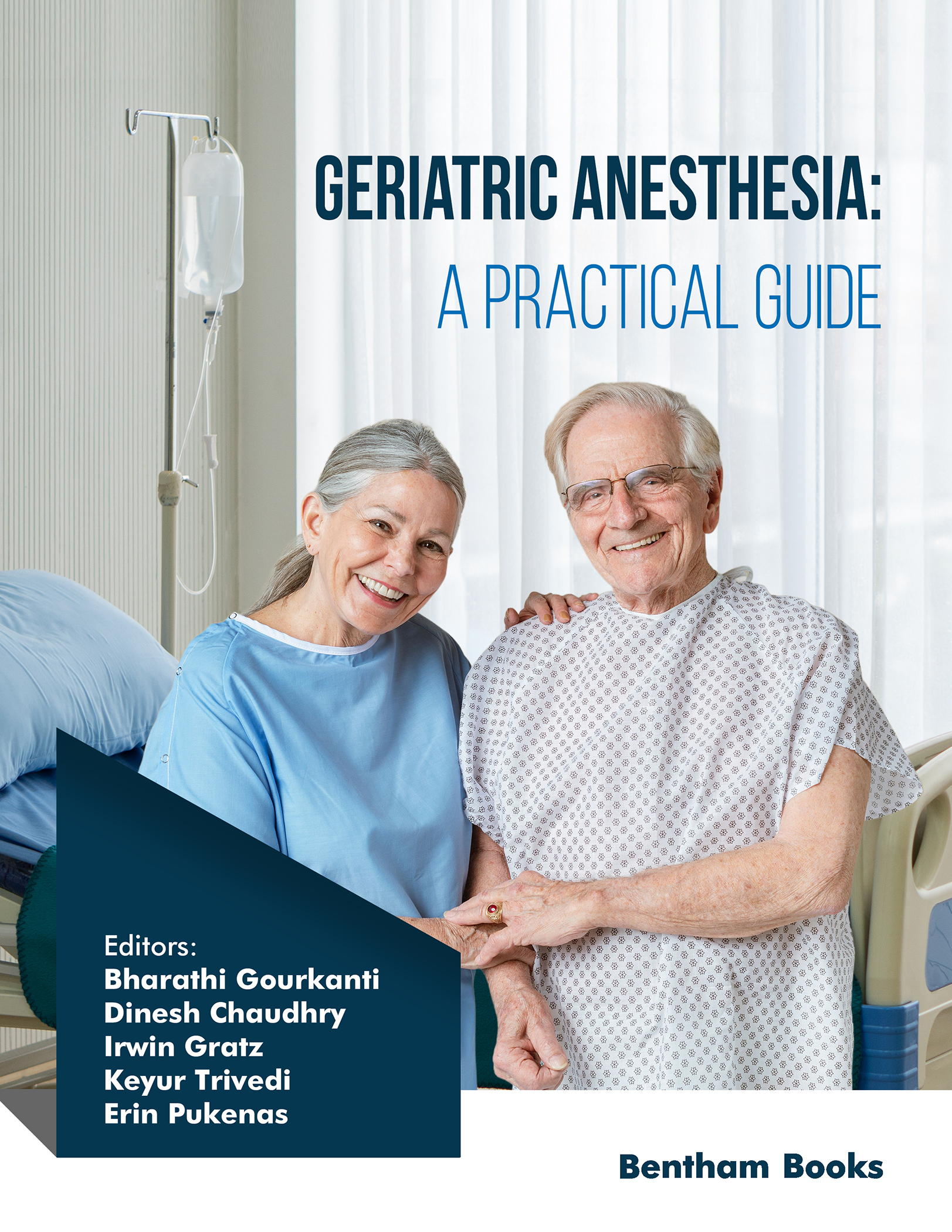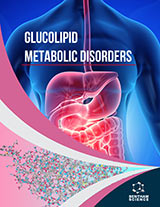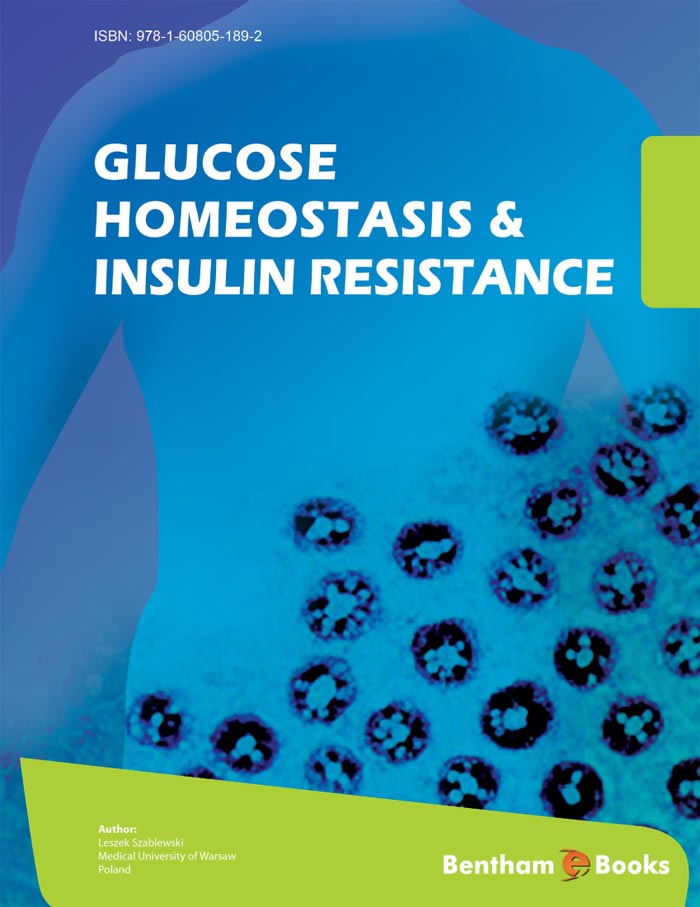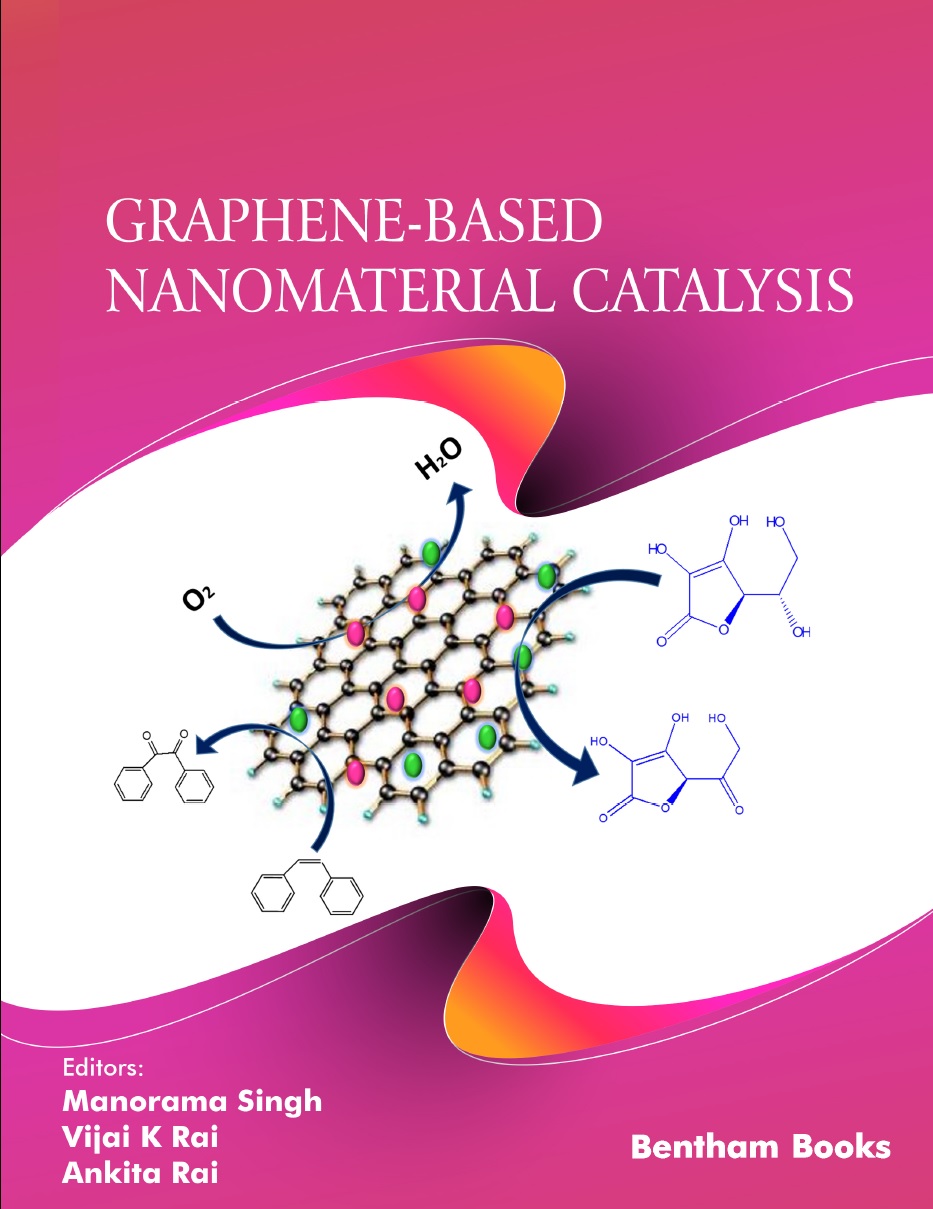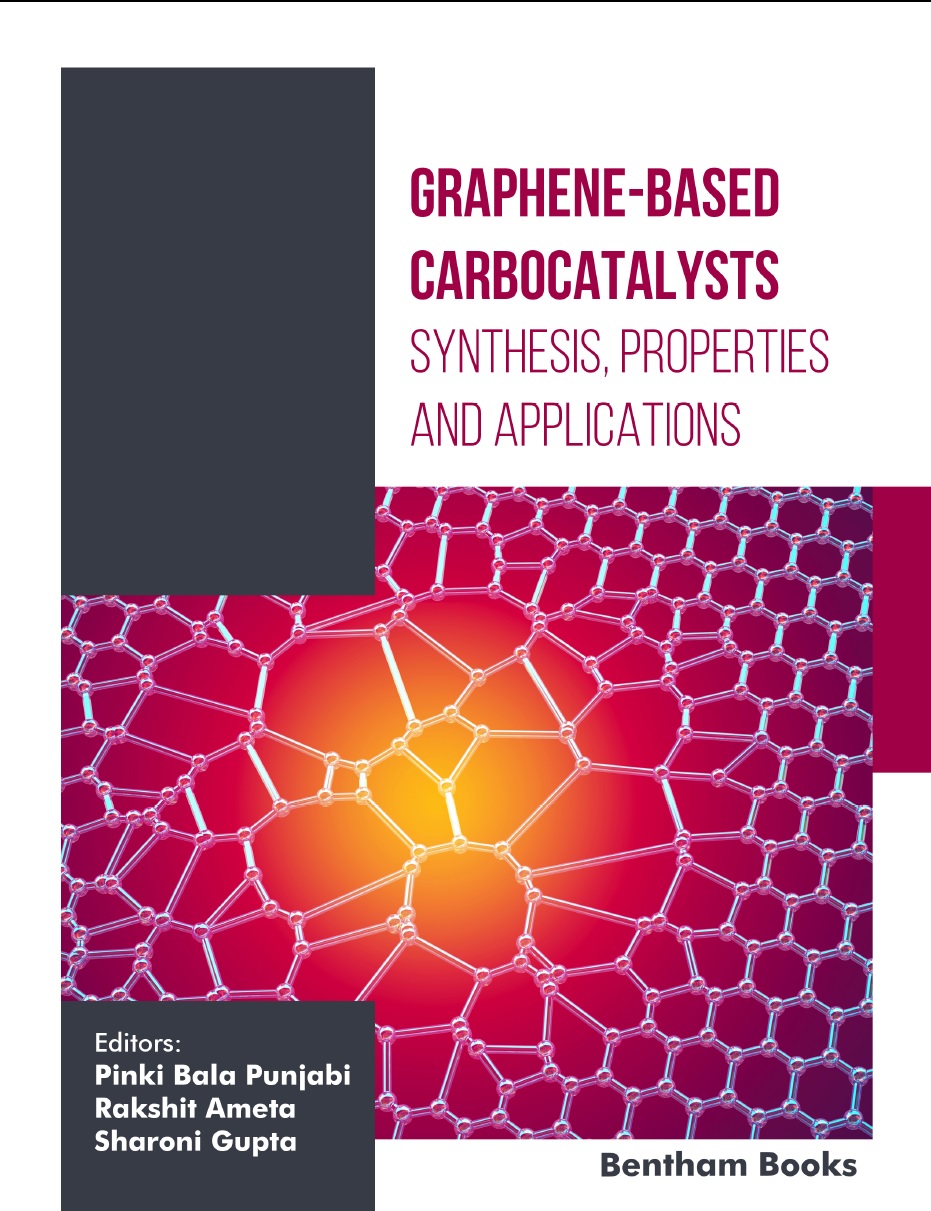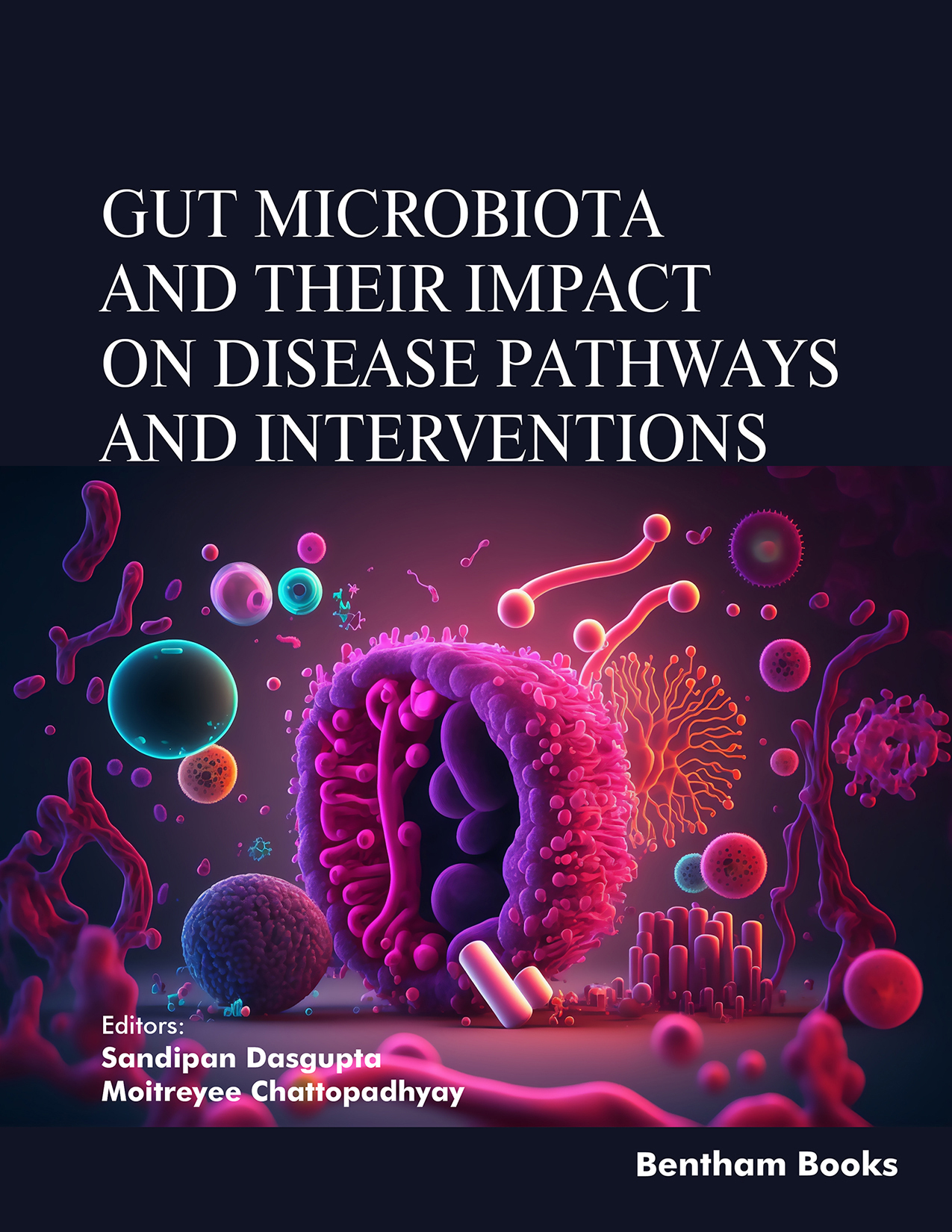Bentham Science Publishers
Bentham Science Publishers is a major publisher of more than 100 peer-reviewed science, technology and medical (STM) journals, along with a rapidly growing collection of eBooks. Since 1993, Bentham Science Publishers has been catering to the information needs of the pharmaceutical, engineering, biomedical and medical research community.901 - 1000 of 1906 results
-
-
Frontiers in Stem Cell and Regenerative Medicine Research: Volume 11
More LessStem cell and regenerative medicine research is an important area of clinical research which promises to change the face of medicine as it will be practiced in the years to come. Challenges in the 21st century to combat diseases such as cancer, Alzheimer's disease and retinal disorders, among others, may well be addressed employing stem cell therapies and tissue regeneration techniques. Frontiers in Stem Cell and Regenerative Medicine Research brings updates on multidisciplinary topics relevant to stem cell research and their application in regenerative medicine. The series is essential reading for researchers seeking updates in stem cell therapeutics and regenerative medicine.
Volume 11 includes 5 chapters on these topics:
- The use of embryology in clinical practice
- Molecular regulation and signaling transduction in human tissue development
- Cell differentiation on hydrogels and its application in regenerative medicine
- Stem cell therapy for sepsis
- Tumorigenicity assessments for stem cell-derived therapeutic products.
-
-
-
Frontiers in Stem Cell and Regenerative Medicine Research: Volume 2
More LessStem cell and regenerative medicine research is a hot area of research which promises to change the face of medicine as it will be practiced in the years to come. Challenges in the 21st century to combat diseases such as tumors, Alzheimer's disease and related neurodegenerative diseases may well be addressed employing stem cell therapies and tissue regeneration. Frontiers in Stem Cell and Regenerative Medicine Research is essential reading for researchers seeking updates in stem cell therapeutics and regenerative medicine.
The second volume of this series features reviews on several key topics in this field including cardiac regeneration strategies, induced pluripotent stem cell therapeutics, stem cell therapy for peripheral nerve and cutaneous injuries, dental tissue regeneration, the potential of stem cell differentiation into ovarian cells and much more.
-
-
-
Frontiers in Stem Cell and Regenerative Medicine Research: Volume 3
More LessStem cell and regenerative medicine research is a hot area of research which promises to change the face of medicine as it will be practiced in the years to come. Challenges in the 21st century to combat diseases such as cancer, Alzheimer and related diseases may well be addressed employing stem cell therapies and tissue regeneration. Frontiers in Stem Cell and Regenerative Medicine Research is essential reading for researchers seeking updates in stem cell therapeutics and regenerative medicine.
The third volume of this series features reviews on the use of stem cells in bone repair, neonatal brain injury and esophageal tissue engineering. The volume also features an update on current knowledge on regenerative medicine for lung tissue in pulmonary disease.
-
-
-
Frontiers in Stem Cell and Regenerative Medicine Research: Volume 4
More LessStem cell and regenerative medicine research is a hot area of research which promises to change the face of medicine as it will be practiced in the years to come. Challenges in the 21st century to combat diseases such as cancer, Alzheimer and related diseases may well be addressed employing stem cell therapies and tissue regeneration. Frontiers in Stem Cell and Regenerative Medicine Research is essential reading for researchers seeking updates in stem cell therapeutics and regenerative medicine.
The fourth volume of this series features reviews on the use of stem cells through retrodifferentiation, mesodermal regeneration, hematopoiesis and mesenchymal stem cells. The volume also features a chapter on current knowledge on cell-based therapy in veterinary medicine.
-
-
-
Frontiers in Stem Cell and Regenerative Medicine Research: Volume 5
More LessStem cell and regenerative medicine research is a hot area of research which promises to change the face of medicine as it will be practiced in the years to come. Challenges in the 21st century to combat diseases such as cancer, Alzheimer and related diseases may well be addressed employing stem cell therapies and tissue regeneration. Frontiers in Stem Cell and Regenerative Medicine Research is essential reading for researchers seeking updates in stem cell therapeutics and regenerative medicine.
The fifth volume of this series features reviews on vascular regeneration, neuronal tissue grafting in animal CNS disease models, template mediated biomineralization in bones, corneal endothelium differentiation and stem cell uses for managing hepatocellular carcinoma.
-
-
-
Frontiers in Stem Cell and Regenerative Medicine Research: Volume 6
More LessStem cell and regenerative medicine research is a hot area of research which promises to change the face of medicine as it will be practiced in the years to come. Challenges in the 21st century to combat diseases such as cancer, Alzheimer and related diseases may well be addressed employing stem cell therapies and tissue regeneration. Frontiers in Stem Cell and Regenerative Medicine Research is essential reading for researchers seeking updates in stem cell therapeutics and regenerative medicine.
The sixth volume of this series features reviews on roles of mesenchymal stem cells in cartilage regeneration and bone regeneration, liver regeneration, cardiogenesis, cardiomyocyte differentiation, and regenerative therapy for neurodegenerative disorders.
-
-
-
Frontiers in Stem Cell and Regenerative Medicine Research: Volume 7
More LessStem cell and regenerative medicine research is a hot area of research which promises to change the face of medicine as it will be practiced in the years to come. Challenges in the 21st century to combat diseases such as cancer, Alzheimer and related diseases may well be addressed employing stem cell therapies and tissue regeneration. Frontiers in Stem Cell and Regenerative Medicine Research is essential reading for researchers seeking updates in stem cell therapeutics and regenerative medicine.
The seventh volume of this series features reviews on roles of mesenchymal stem cells and biomaterials in cartilage regeneration in vivo, liver regeneration, cardiogenesis and magnetic nanoparticles for regenerative therapy.
-
-
-
Frontiers in Stem Cell and Regenerative Medicine Research: Volume 8
More LessStem cell and regenerative medicine research is a hot area of research which promises to change the face of medicine as it will be practiced in the years to come. Challenges in the 21st century to combat diseases such as cancer, Alzheimer and related diseases may well be addressed employing stem cell therapies and tissue regeneration. Frontiers in Stem Cell and Regenerative Medicine Research is essential reading for researchers seeking updates in stem cell therapeutics and regenerative medicine.
This volume includes reviews on the following topics:
-the role of microvesicles and exosomes in mesenchymal stem cell (MSCs) in treating diseases while overcoming side effects
-alternative models for understanding cancer stem cell biology
-stem cells treatments for orthopaedic injury and endocrine disorders
-wound healing biomaterials
-theoretical models of hematopoietic cell dynamics (with implications for bone marrow transplants)
-
-
-
Frontiers in Stem Cell and Regenerative Medicine Research: Volume 9
More LessStem cell and regenerative medicine research is an important area of clinical research which promises to change the face of medicine as it will be practiced in the years to come. Challenges in the 21st century to combat diseases such as cancer, Alzheimer's disease and retinal disorders, among others, may well be addressed employing stem cell therapies and tissue regeneration techniques. Frontiers in Stem Cell and Regenerative Medicine Research is essential reading for researchers seeking updates in stem cell therapeutics and regenerative medicine.
This volume includes current literature on a variety of topics:
-the utility of exogenous and endogenous neural stem cells in spinal cord injury
-somatic cells for human induced pluripotent stem cells (iPSCs)
-reactive oxygen species (ROS) mediated cellular signaling for stem cell differentiation
-the therapeutic potential of microRNAs in cardiac diseases
-stem cell therapy for the treatment of malaria
-
-
-
Frontiers on Recent Developments in Plant Science: Volume 1
More LessVolume 1 - Frontiers on Recent Developments on Plant Science is an edited, peer-reviewed volume comprised of a collection of individual chapters from leading research groups across different continents. Due to its multidisciplinary nature, the combined experiences and expertise in plant science has an increasing importance both in agriculture and industry. This evidenced by inclusion of plant biotechnology in academic curricula from high school to undergraduate and postgraduate degree levels, and even in Ph.D. courses. Plant Biotechnology encompasses a wide range of narrow research areas such as agricultural biotechnology, industrial and environmental biotechnology, pharmacy and pharmaceutical sciences and drug development from plant sources, plant-microbe host interactions studies, biochemical and molecular studies on gene expression using various plant models, gene targeting, homologous and non-homologous recombination studies on plant models, RNAi technology in plants, cereal biotechnology, biotechnology of endangered plant species, forestry, phytoremediation technologies, genetic engineering, gene delivery approaches, plant tissue culture and biological and biochemical techniques and methods/protocols involved in different focal area of plant science.
-
-
-
Functional Bio-based Materials for Regenerative Medicine From Bench to Bedside (Part 1)
More LessFunctional Bio-based Materials for Regenerative Medicine: From Bench to Bedside explores the use of bio-based materials for the regeneration of tissues and organs. The book presents an edited collection of 28 topics in 2 parts focused on the translation of these materials from laboratory research (the bench) to practical applications in clinical settings (the bedside). Chapter authors highlight the significance of bio-based materials, such as hydrogels, scaffolds, and nanoparticles, in promoting tissue regeneration and wound healing. Topics included in the book include: - the properties of bio-based materials, including biocompatibility, biodegradability, and the ability to mimic the native extracellular matrix. - fabrication techniques and approaches for functional bio-based material design with desired characteristics like mechanical strength and porosity to promote cellular attachment, proliferation, and differentiation - the incorporation of bioactive molecules, such as growth factors, into bio-based materials to enhance their regenerative potential. - strategies for the controlled release of molecules to create a favorable microenvironment for tissue regeneration. - the challenges and considerations involved in scaling up the production of bio-based materials, ensuring their safety and efficacy, and obtaining regulatory approval for clinical use Part 1 covers techniques for tissue engineering, wound healing and skin engineering. It also presents reviews on techniques such as acellular synthesis and 3D bioprinting. Materials highlighted in this part include chitosan-based nanoparticles, nanocollagen-based materials and plant based composites. Functional Bio-based Materials for Regenerative Medicine: From Bench to Bedside is a valuable reference for researchers in biomedical engineering, cell biology, and regenerative medicine who want to update their knowledge on current developments in the synthesis and application of functional biomaterials.
-
-
-
Functional Bio-based Materials for Regenerative Medicine: From Bench to Bedside (Part 2)
More LessFunctional Bio-based Materials for Regenerative Medicine: From Bench to Bedside explores the use of bio-based materials for the regeneration of tissues and organs. The book presents an edited collection of 28 topics in 2 parts focused on the translation of these materials from laboratory research (the bench) to practical applications in clinical settings (the bedside). Chapter authors highlight the significance of bio-based materials, such as hydrogels, scaffolds, and nanoparticles, in promoting tissue regeneration and wound healing.
Topics included in the book include:
- the properties of bio-based materials, including biocompatibility, biodegradability, and the ability to mimic the native extracellular matrix.
- fabrication techniques and approaches for functional bio-based material design with desired characteristics like mechanical strength and porosity to promote cellular attachment, proliferation, and differentiation
- the incorporation of bioactive molecules, such as growth factors, into bio-based materials to enhance their regenerative potential.
- strategies for the controlled release of molecules to create a favorable microenvironment for tissue regeneration.
- the challenges and considerations involved in scaling up the production of bio-based materials, ensuring their safety and efficacy, and obtaining regulatory approval for clinical use
Part 2 covers advanced materials and techniques used in tissue engineering. Topics focus on advanced composite materials for 3D scaffolds and the repair of tissues in different organs such as the heart, cornea, bone and ligaments. Materials highlighted in this part include polyamide composites, electrospun nanofibers, and different bio-based hydrogels.
Functional Bio-based Materials for Regenerative Medicine: From Bench to Bedside is a valuable reference for researchers in biomedical engineering, cell biology, and regenerative medicine who want to update their knowledge on current developments in the synthesis and application of functional biomaterials.
-
-
-
Functional Composite Materials: Manufacturing Technology and Experimental Application
More LessThis book highlights the advancements in the manufacture and testing of functional composites, metal matrix composites and polymer matrix composites. Chapters provide information about machinability studies of metals and composites using a variety of analytical techniques. The 12 book chapters also highlight updates in manufacturing technologies like CNC turning processes, electrical discharge machining, end milling, abrasive jet machining, electro chemical machining, additive manufacturing, and resistance spot welding. Readers will learn how to solve applied problems in industrial processing and applications. The book is of significant interest to industrialists working on the basic and experimental parameters for fabricating functional composites and manufacturing technology. Because of the multidisciplinary nature of the presented topics, the information presented in the book is of value to a broad audience involved in research, including materials scientists, chemists, physicists, manufacturing and chemical engineers and processing specialists who are involved and interested in the frontiers of composite materials.
-
-
-
Functional Foods for Health Maintenance: Understanding their Role in Cancer Prevention
More LessThe comprehensive information about the inverse relationship between the incidence of cancer and the consumption of natural food has impacted our understanding of the biochemical mechanisms behind cancer and its treatment. Functional Foods for Health Maintenance: Understanding their Role in Cancer Prevention is a review of pre-clinical studies unraveling the chemotherapeutic potential of phytochemicals and other food sources. The editors attempt to summarize the evidence, methods and techniques for identifying specific nutraceuticals and foods capable of interfering and reducing the risk of cancer.
The book compiles 19 edited chapters that cover the chemopreventive effects of different phytochemicals, animal and stem cell models for cancer prevention, and novel nanotechnology-based nutraceuticals. The contributors have also highlighted the techniques employed for the detection of cancer with a review on cancer biomarkers. The book is a resource for post-graduate students and researchers working in the field of nutrition, molecular biology, chemoprevention, biochemistry and pharmaceutical sciences.
-
-
-
Functional Materials for Solid Oxide Fuel Cells: Processing, Microstructure and Performance
Frontiers in Ceramic Science: Volume 1
More LessFrontiers in Ceramic Science highlights the importance of ceramics and their applications in different fields such as manufacturing, construction, engineering, energy and much more. Each volume of the series brings a themed focus on a specific topic with contributions from experts around the world. The series is essential reading for materials science researchers interested in current developments in ceramic manufacturing and applications.
Solid Oxide Fuel Cells (SOFCs) have received great attention among researchers in the past few decades due to their high electrochemical energy conversion efficiency, environmental friendliness, fuel flexibility and wide range of applications. This volume is a contribution from renowned researchers in the scientific community interested in functional materials for SOFCs. Chapters in this volume emphasize the processing, microstructure and performance of electrolyte and electrode materials. Contributors review the main chemical and physical routes used to prepare ceramic/composite materials, and explain a variety of manufacturing techniques for electrode and electrolyte production and characterization. Readers will also find information about both symmetrical and single fuel cells. The book is a useful reference for students and professionals involved in SOFC research and development.
-
-
-
Functional Molecular Imaging In Hepatology
More LessThe eBook discusses how the special physiology of the liver must be considered when applying functional molecular imaging in hepatology. The main topics of the eBook include the clinical and scientific use and possibilities of functional molecular imaging for investigations of hepatic blood perfusion, substrate metabolism, and biliary secretion as well as for cancer diagnostics (primary and secondary liver cancers). Functional imaging of changes in cerebral blood perfusion and metabolism in patients with liver diseases is also covered. The eBook is written by internationally renowned experts and is intended for everyone who is interested in hepatology or functional molecular imaging.
-
-
-
Fundamental Problems in Quantum Field Theory
More LessQuantum physics is based on four fundamental interactions of electromagnetic, weak, gravitational and strong forces. All the interactions are expressed in terms of fermion and boson fields which can describe the quantum states of electrons, nucleons and photons in atoms or nuclei. Correct behaviors of these particles can now be described by the basic field theory terminology, and this textbook explains, for the first time, quantum field theory in a unifying method.
At present, modern quantum theory is at a critical junction between different theories, and this textbook presents a clear description of fundamental quantum fields with a sound theoretical framework. No exotic theoretical concepts such as general relativity nor spontaneous symmetry breaking nor quantum anomaly are adopted in this textbook, and indeed all the observed physical quantities can be well understood within the standard field theory framework without introducing any non-physical particles or fields.
From this textbook, readers will be guided through a concrete future direction of quantum field theory and will learn how the motion of electrons in any kind of material can be understood in terms of fields or state vectors. Readers will also learn about application of basic field theory in quantum chemistry, quantum biology and so on.
Fundamental Problems in Quantum Field Theory is a handy resource for undergraduate and graduate students as well as supervisors involved in advanced courses in quantum physics.
-
-
-
Fundamentals and Prospects of Catalysis
Catalysis: Current and Future Developments: Volume 1
More LessCatalysis is an area of chemical sciences which has fascinated a wide range of academicians, researchers, chemical technologists and industries throughout the world. Progress in this field has been made owing to the thrust provided by this research and commercial interest. The field of catalysis is interdisciplinary by its nature, as it requires knowledge of organic synthesis, coordination and organometallic chemistry, reaction kinetics and mechanisms, stereochemical concepts and materials science.
Fundamentals and Prospects of Catalysis highlights many important topics and sub-disciplines in catalysis by presenting 7 chapters on different but varied catalytic processes. This volume presents the following topics:
Organocatalytic Asymmetric Synthesis of Spiroacetals and Bridged Acetals
Design and Development of Bimetallic Enantioselective Salen Co Catalysts for The Hydrolytic Kinetic Resolution of Terminal Epoxides
Recent Trend in Asymmetric Heterogeneous Flow Catalysis
Ball Milling: A Green Tool in Synthetic Organic Chemistry
Recent Advances in the Developments of Enantioselective Electrophilic Fluorination Reactions via Organocatalysis
Green and Sustainable Biocatalytic Routes to Prepare Biobased Polyols as Precursors for Polyurethanes with Comparison of Existing Biobased Polyol Technology
Polymers Used as Catalysts
Catalysis: Current and Future Developments is a book series that covers theoretical, experimental and applied research on catalysis and their role in enhancing the rate of chemical reactions. The scope of topics covered by volumes in the series include heterogeneous catalysis, homogeneous catalysis, bio-catalysis, aspects of catalyst preparation, activation, aging, deactivation, rejuvenation, adsorption, synthesis and catalytic functions of new catalysts (which include novel inorganic solids and metal complexes). The series also presents reviews on surface chemistry, and commercially important model catalysts and catalytic processes.
-
-
-
Fundamentals of Analysis In Physics
More LessMany beginners find physics to be a challenging subject to learn, and the difficulty extends to each branch of physics. It would be preferable for beginners to learn about different branches of physics as quickly as possible with a simplified understanding of the relevant mathematical relationships. After learning the position of each field in physics, it becomes easier to learn details of each field. In this book, special functions are not used to explain the solutions of equations.
Fundamentals of Analysis In Physics summarizes the analytical methods in different fields of physics The book covers several known fields of physics and is a useful text for beginners in physics, college and university students, and working professionals who may not have a background in mathematics or physics.
Key features:
- Summarizes information about different fields in physics in 150 pages
- Covers 7 different fields of physics (classical mechanics, electromagnetism, quantum mechanics, relativistic quantum mechanics, statistical mechanics and more) in 7 separate chapters
-Contains simple explanations without the use of special functions.
-
-
-
Fundamentals of Cellular and Molecular Biology
More LessFundamentals of Cellular and Molecular Biology is a comprehensive textbook designed to explain the molecular mechanisms that underpin the functions and structures within living organisms. This resource focuses on improving the reader's understanding and exploration of the cellular and molecular basis of life, emphasizing the latest research findings and technological advancements. The book is structured into 18 chapters that systematically cover topics ranging from the basic structural components of cells to the complex processes of gene expression, protein synthesis, and cell signaling. It offers a detailed examination of DNA replication, repair mechanisms, and the molecular basis of genetic diseases. Additionally, the book explains the application of molecular biology in biotechnology, medicine, and environmental science, as well as advanced topics like cloning, gene therapy, and molecular diagnostics.
Key features:
- Clear explanations of complex concepts, bridging basic biology concepts with applied scientific fields
- Uses real-world examples to illustrate scientific principles
- Includes information on the latest research and technological breakthroughs.
- Glossaries and references for each chapter
- Facilitates learning with diagrams, flowcharts, and tables that summarize critical information, making complex subjects accessible.
Fundamentals of Cellular and Molecular Biology is an essential resource for students in life science courses such as biology, biochemistry, biotechnology, and medicine.
-
-
-
Fundamentals of Computational Methods for Engineers
More LessThis textbook bridges the gap between introductory and advanced numerical methods for engineering students. The book initially introduces readers to numerical methods before progressing to linear and nonlinear equations. Next, the book covers the topics of interpolation, curve fitting and approximation, integration, differentiation and differential equations. The book concludes with a chapter on advanced mathematical analysis which explains methods for finite difference, method of moments and finite elements.
The book introduces readers to key concepts in engineering such as error analysis, algorithms, applied mathematics with the goal of giving an understanding of how to solve engineering problems using computational methods. Each of the featured topics is explained with sufficient detail while retaining the usual introductory nuance. This blend of beginner-friendly and applied information, along with reference listings makes the textbook useful to students of undergraduate and introductory graduate courses in mathematics and engineering.
-
-
-
Fundamentals of Educational Technology
More LessEducational technology refers to the preparation and use of electronic resources, computer applications, and audio-visual aids which are used in the teaching and learning process. For administrators, the term also includes the planning, organization validation, evaluation, and implementation of all kinds of educational programs. Educational technology is now important for the selection of appropriate teaching media as well as the development, and application of curricula. Fundamentals of Educational Technology work explains the basic facts about educational technology to inform teachers and students. The book includes 6 chapters which cover the subject in a simple manner suitable for learners in education programs. Key Features: - 6 organized chapters on the basics of educational technology and media - Simple reader-friendly organization of contents with relevant diagrams - Gives a historical perspective of the field - Gives an overview of digital and electronic tools for educators - Includes information about relevant teaching methods - Gives an overview of the role of electronic and digital media in education - Includes a section on the ethical use of educational technology Fundamentals of Educational Technology serves as a basic guide for educational instructors and administrators on educational technology and its role in teaching and designing educational programs at all levels.
-
-
-
Fundamentals of Materials Engineering- A Basic Guide
More LessFundamentals of Materials Engineering - A Basic Guide is a helpful textbook for readers learning the basics of materials science. This book covers important topics and fundamental concepts of materials engineering including crystal structure, imperfections, mechanical properties of materials, polymers, powder metallurgy, corrosion and composites. The authors have explained the concepts in an effective way and by using simple language for the benefit of a broad range of readers. This book is also beneficial to the students in engineering courses at B.Sc, M.Sc, and M.Tech. levels.
-
-
-
Fundamentals of Mathematics in Medical Research: Theory and Cases
More LessFundamentals of Mathematics in Medical Research: Theory and Cases is a comprehensive guide to the mathematical principles and methods used in medical research. This book is structured to facilitate learning and application and gives a solid foundation to readers. The book is divided into multiple parts that explain basic concepts in a progressive way.
- Part I covers real-valued functions of one or more variables with geometric representations to establish a core understanding of advanced mathematics
- Part II covers inferential methods of probability and statistics from basic probability to parametric and nonparametric tests
- Part III covers correlation theory and advanced analysis of real-valued functions
- Part IV covers multivariable analysis for solving complex problems with an explanation of Markov Chain models
- An Appendix provides solutions for all exercises and along with Fortran 90 programs, Python scripts and Linux scripts to explore the mathematical concepts explained in the book.
Key Features:
Introduction and Conclusion in Every Chapter
Exercises and Solutions
Program codes and scripts
Comprehensive Coverage of Mathematics for Academics and Research
Real-World Cases
This book is an essential resource for researchers, students, and professionals in medicine and allied fields who seek to understand and apply mathematical methods in their work.
-
-
-
Fundamentals of Nuclear Physics
More LessFundamentals of Nuclear Physics gives elementary understanding of nuclear and particle physics. The textbook offers an overview of the subject, providing students with a basic understanding about 1) the atomic structure and the nucleus, 2) equipment such as particle detectors, particle accelerators, and nuclear reactors, 3) radioactivity, and 4) elementary particles. Each chapter provides fundamental theoretical and experimental knowledge required for students to strengthen their concepts.
Other key features of the book include:
- Structured chapters designed for easy reading and stimulating interest for learners
- Sophisticated figures
- Thoroughly solved equations
- Bibliographic references for further reading
- Updated information about different types of nuclear reactors
- Information about nuclear astrophysics Fundamentals of Nuclear Physics is suitable for introductory undergraduate courses in nuclear physics as well as more innovative courses geared towards nuclear engineering.
-
-
-
Fundamentals of Systems Analysis and Modeling of Biosystems and Metabolism
More LessAn understanding of biological systems at cellular and molecular levels helps researchers to model cellular behavior in different experimental conditions. This, in turn, can lead to insights about the influence of cell culture environment and the effect of knockout gene research when studying mutations that affect specific metabolic pathways. A systems biology approach, therefore, allows researchers to simulate experimental observations in order to predict outcomes at the cellular level.
Fundamentals of Systems Analysis and Modeling of Biosystems and Metabolism presents the basic concepts required for a systems biology approach towards cellular modeling. The book is intended as a primer for systems biology and biomedical engineering graduates and researchers. The text introduces readers to concepts related to cellular metabolism and its regulation, (enzymatic regulation and transcriptional regulation) which are also incorporated into a main metabolic model of a cell. The book also has chapters dedicated to identifying and incorporating steady-state and dynamic characteristics when considering a biological model for a computer simulation.
Readers will be able to (1) understand the basis of systems analysis towards creating appropriate biological models and simulations, (2) develop useful kinetic models based on cellular transport phenomena and metabolic regulation, (3) understand how to simulate a cell growth phenotype, and analyze it with experimental data.
-
-
-
Fungal Biotechnology for Biofuel Production
Mycology: Current and Future Developments: Volume 1
More LessMycology: Current and Future Developments is a book series that brings together the latest contributions to research on the biology, genetics, and industrial use of fungi. Each book chapter is written by academic / professional experts from around the world. The book series is of interest to mycologists and allied researchers seeking to gain new knowledge perspectives about fungi.
This volume of the book series focuses chiefly on advances biofuel production. Topics covered in this volume include an overview of biofuel production, the use of lignocelluloses in fungal biofuel production, fungal metabolic engineering, biomass pretreatment for biofuel refineries, and more. The volume also contains chapters about research on other fungi such as S. Cerevisiae. The reviews presented in this volume serve as a useful reference for researchers and readers interested in learning about new developments in biofuel production at a time when the need for alternative energy sources is ever increasing.
-
-
-
Fungal Lipid Biochemistry
More LessFungal Lipid Biochemistry explores the intricate biochemistry of fungal and microbial lipids. The book focuses on recent advances in our knowledge about the distribution, classification, and biochemistry of fungal lipids. The book is divided into four sections, starting with an introduction to fungal lipids which includes definition, classification, nomenclature, and some historical aspects of fungal lipid research. This is followed by an overview of fungal lipids, and environmental and nutritional cultural conditions affecting lipid production. The second section contains four chapters that explain the metabolism of fatty acids, their biosynthetic pathways together with their storage mainly in the form of triacylglycerols. The latter includes a key description of the recently discovered lipid droplet acting as a highly specific cellular compartment for the storage of neutral lipids. The third section contains five chapters concerned with the relatively recent interpretation of other major lipid classes which include glycerophospholipids, sphingolipids, aliphatic hydrocarbons, sterols, carotenoids, and polyprenols and their occurrence and biosynthesis. The final section covers lipid metabolism during fungal development and sporulation. Key features - Extensive coverage of fungal lipid biochemistry, with a focus on recent knowledge - Includes chapters for specific lipid classes with notes on their metabolism - Gives knowledge about the role of lipids in fungal growth and development - Provides references for further reading This book is a comprehensive reference for academics, scientific researchers, and industrial scientists (in biotechnology, food science and nutritional health) who require information about fungal lipid composition and biochemistry.
-
-
-
Future Farming: Advancing Agriculture with Artificial Intelligence Intelligence
More LessArtificial Intelligence is playing a vital role in implementing the smart methods for the agriculture and it will change the aspects of performing agricultural activities. The objective of this book is to inform readers about how artificial intelligence is improving agriculture by exploring its applications. The book addresses several aspects of the artificial intelligence applications in the smart agriculture including, pest control, leaf disease identification, identification of weed, field security and applications of drones in smart farming. Chapters are contributed by experts in agriculture, computer science and biotechnology.
Key Themes:
Advanced machine learning techniques for pest control and disease identification
Automated recognition and classification of plant diseases, focusing on tomatoes and pearl millet
Integration of artificial intelligence for solar-powered robots to identify weeds and damages in vegetables
Development of field prevention systems to deter wild animals in farming areas
Utilization of machine learning for weather forecasting to facilitate smart agriculture practices
Intelligent crop planning and precision farming through AI applications
Integration of artificial intelligence and drones to enhance efficiency and effectiveness in smart farming operations
Other features of the book include a list of references and simple summaries in each chapter to distil the information for readers.
The book is a reference material for courses on automation in agriculture and as a handbook for anyone interested in new advances in farming.
-
-
-
Future Trends For Top Materials
More LessThis reference focuses on defined types of compounds which are of interest to readers who are motivated to explore basic information about new materials for advanced industrial applications. General and established synthetic methodologies for several compounds are explained giving a straightforward approaches for researchers who intend to pursue new projects in materials sciences, This book presents 9 chapters, covering phthalocyanines, polymethines, porphyrins, BODIPYs, dendrimers, carbon allotropes, organic frameworks, nanoparticles and future prospects. Each chapter covers detailed synthetic aspects of the most established preparation routes for the specific compounds, while giving a historical perspective, with selective information on actual and outstanding applications of each material, unraveling what likely might be the future for each category. This book is intended as a hands-on reference guide for undergraduates and graduates interested in industrial chemistry and materials science.
-
-
-
Futuristic Projects in Energy and Automation Sectors: A Brief Review of New Technologies Driving Sustainable Development
More LessFuturistic Projects in Energy and Automation Sectors is a review of analyses on energy transitions in power grids and the opportunities and challenges for building sustainable energy systems to improve human capabilities. 14 chapters examine renewable energy-based and automated systems, with a focus on projects that are designed with sustainability in mind. Topics covered in this review include 1) power systems, 2) renewable energy, 3) power electronics, 4) energy storage and conversion, 5) home automation, 6) control systems, 7) robotics, 8) artificial intelligence, and 9) technology to fight COVID-19.
This review will be of interest to scholars, and policymakers interested in futuristic and urban and rural energy planning, sustainable and renewable energy projects, sustainable development, and environment management.
-
-
-
GIS - An Overview of Applications
Frontiers in Information Systems: Volume 1
More LessGIS - An Overview of Applications is a compilation of reviews that give an overview of the latest advances in Geographic Information System (GIS) technology. The multidisciplinary nature of the book gives readers perspectives in research fields as diverse as forest management, land use and cover, tourism, environment impact assessment, climate change studies, biodiversity and health care and mobility studies.
The book is a suitable reference for graduates involved in data engineering and GIS courses as well as working professionals in the field of data engineering, analysis and management.
-
-
-
GPI Membrane Anchors The Much Needed link
More LessThis Ebook aims to review basic understandings and give current opinions about several important aspects of glycosylphosphatidylinositol-anchored (GPI) protein biology from leading experts in this exciting and emerging field. The scope ranges from micro-domain localization and signaling to proteomics aspects, biophysical behavior through trans-cellular mobility to chemical synthesis of GPI mimics and finally modification of multi-scaled membrane surfaces and potential medical and biotech uses. The applied slant makes it very useful to the current state of knowledge. It is hoped that it will prove to be of considerable interest to students and researchers in this field.
-
-
-
Gel-Forming and Soluble Mucins
Mucins – Potential Regulators of Cell Functions: Volume 1
More LessMucins are glycoproteins that are expressed in cells of different types and fulfill multiple functions that determine participation of these proteins in such processes as signal transduction, regulation of gene expression, cell proliferation, embryogenesis, cell differentiation, immunity, apoptosis and cancer development. This E-book series on mucins presents critical reviews on modern data concerning structures and functions of mucins, their roles in cell physiology and pathology as well as molecular aspects of therapy of mucin-associated diseases. Mucins are represented by two types of molecules: secreted mucins and membrane-bound (receptor) mucins. This e-book series represents a unique attempt to describe the molecular nature of mucin multifunctionality in separate volumes. Chapters in each volume demonstrate the central role of mucins as connectors and regulators of different signaling pathways and their participation metastatic processes. Clinical aspects of mucins, such as their role as diagnostic markers as well as possible applications in mucin-based immuno- and gene-therapies are also discussed.
This is the first volume of the series. This volume introduces readers to the general properties of mucins, followed by chapters on specific variants of gel-forming and soluble mucins. The volume concludes with information on the functions of secreted mucins.
-
-
-
Genes in Health and Disease
Advances in Genome Science: Volume 4
More LessGenome science or genomics is essential to advancing knowledge in the fields of biology and medicine. Specifically, researchers learn about the molecular biology behind genetic expression in living organisms and related methods of treating human genetic diseases (including gene therapy). Advances in Genome Science is an e-book series which provides a multi-disciplinary view of some of the latest developments in genome research, allowing readers to capture the essence and diversity of genomics in contemporary science.
The fourth volume of this ebook series features a selection of articles covering the genetic mechanisms in the development of specific plants (orchids, thale cress), Prader-Willi Syndrome, enzyme genetics (tyrosine kinase inhibitors and fungal laccases) and much more.
-
-
-
Genome Editing in Bacteria (Part 1)
More LessThis reference is a comprehensive review of genome editing in bacteria. The multi-part book meticulously consolidates research findings and insights on the applications of bacteria across several industries, including food processing and pharmaceutical development. The book covers four overarching themes for readers: a historical perspective of genome editing, genome editing in probiotics, applications of genome editing in agricultural microbiology and genetic engineering in environmental microbiology. The editors have also compiled chapters that provide an in-depth analysis of gene regulation and metabolic engineering through genome editing tools for specific bacteria.
Key topics in part 1:
- An Overview of advances in CRISPR-CAS research
- Applications of CRISPR/CAS9-based genome editing for industrial microorganisms
- Gut microbiome modulation to address gut dysbiosis
- Bifidobacterium genome editing for probiotic development and metabolic engineering.
- Insights into the use of lactic acid bacteria as starter cultures in the food
- Genome editing of vegetable-derived L. Plantarum
- Genome editing in Bacillus Licheniformis
Genome Editing in Bacteria is a definitive reference for scholars, researchers and industry professionals navigating the forefront of bacterial genomics.
-
-
-
Genome Editing in Bacteria (Part 2)
More LessThis reference is a comprehensive review of genome editing in bacteria. The multi-part book meticulously consolidates research findings and insights on the applications of bacteria across several industries, including food processing and pharmaceutical development. The book covers four overarching themes for readers: a historical perspective of genome editing, genome editing in probiotics, applications of genome editing in agricultural microbiology and genetic engineering in environmental microbiology. The editors have also compiled chapters that provide an in-depth analysis of gene regulation and metabolic engineering through genome editing tools for specific bacteria.
Key topics in part 2:
- Targeting pathogenic microbes for plants and animals using CRISPR-CAS
- Genome editing microbes to improve crop yield plant growth for sustainable agriculture
- Applications of genome editing for bioremediation
- Microbial genome editing for environmental bioprocessing
- Genetic engineering for methanotrophs
- Genome engineering in Cyanobacteria
- Genome editing in Streptomyces
Genome Editing in Bacteria is a definitive reference for scholars, researchers and industry professionals navigating the forefront of bacterial genomics.
-
-
-
Genome Size and Genetic Homogeneity of Regenerated Plants: Methods and Applications
More LessThis reference is a timely compilation of studies of genome size and genetic stability of regenerated plants. It presents 13 book chapters that cover recent advancements in CRISPR/Cas-based genome editing, the use of molecular markers to analyze somaclonal variation in tissue culture, and genetic stability assessment in various plant species, including medicinally valuable plants like Valeriana and Coffea. The book also highlights the role of flow cytometry in investigating polyploidy and provides valuable insights into genetic fidelity assessment of micropropagated woody plants and orchids. The contributors have shed light on the intra-specific and inter-specific genome and chromosome number variation with reference to gene duplication and DNA sequence loss. Molecular techniques for detecting ploidy levels and genetic homogeneity in regenerated plantlets are also discussed. Additional highlights of the book include brief guidelines for experimental protocols for flow cytometry and molecular markers, coverage of a wide range of plants, and supporting references. This is an excellent reference for biologists, geneticists, and plant scientists exploring genetic homogeneity and genome size variation in diverse plant groups.
-
-
-
Genomics in Biological Anthropology: New Challenges, New Opportunities
Anthropology: Current and Future Developments: Volume 2
More LessMolecular methodologies are crucial to our understanding of human population diversity, as well as our evolutionary relationships with nonhuman primates. The completion of the Human Genome Project has given researchers a complete human reference sequence of genes. Combined with very important advances in sequencing and bioinformatics technologies, genetic research projects are now of a multidisciplinary nature. Anthropologists have the tools to seek information related to questions concerning the origin of the human species. Genomics in Biological Anthropology: New Challenges, New Opportunities explores the impact of new advances in molecular methods, such as DNA sequencing, amplification and analysis on our knowledge about the genetics of prehistoric and existing humans. Topics covered in this volume include an overview of genomic projects, mitochondrial DNA (mtDNA) analysis, ancient DNA, mutation rates in chromosome Y, genomics of isolated populations, complex phenotypes and forensic anthropology.
This volume is a concise primer for students and general readers learning the basics about human genetics, human evolution and biological anthropology
-
-
-
Geriatric Anesthesia: A Practical Guide
More LessGeriatric Anesthesia: A Practical Guide is a comprehensive reference on geriatric anesthesia. The book is divided into three sections. The first section covers the basics of both anatomical and physiological changes in senescence, and important polypharmacy considerations common in elderly patients. The next section covers anesthesia for cardiac and non-surgical patients. Various controversies and legal ethical issues that are particularly significant in the elderly such as advance directives, code status discussions, specific patient groups and shared decision-making prior to surgical interventions, are covered in the final section.
Key features
- 20 referenced chapters covering basic geriatric anesthesia considerations, cardiac and non-surgical patients and special topics, respectively
- Contributions and references from experienced anesthesiologists
- Emphasis on tailoring perioperative management depending on specific circumstances of patients
- Addresses novel and commonly overlooked topics related to the geriatric population
This book is a guide for both anesthesia providers and non-anesthesia medical providers, trainees and students. It equips them with necessary information to understand and devise anesthetic plans while being aware of postoperative complications and the respective treatment and management options.
-
-
-
Global Emerging Innovation Summit (GEIS-2021)
More LessThis Global Emerging Innovation Summit (GEIS 2021) book summarizes the proceedings of the international summit held on April 9th and 10th, 2021. The meeting was organized by Lovely Professional University (LPU) and supported by ENEA - the National Agency for New Technologies, Energy and Sustainable Economic Development.
GEIS-2021 is the most comprehensive conference focused on the diverse facets of the innovations in different technical domains. The goal of this conference is to bring together researchers from academia and industry as well as practitioners in allied fields to share their ideas and solutions related to issues and challenges that rely on the use of technology. The conference highlights the multifaceted nature of innovation in engineering and natural sciences. Attendees are given an opportunity to exchange new ideas to establish research relations to find global partners for future collaboration.
Authors from academics, government agencies and industries, contributed several papers which truly make the conference a diverse and unique platform in the region for a productive and interdisciplinary dialogue. This volume features 59 contributions which were selected after review by the editors.
Chapters cover emerging developments in a broad range sectors including aviation, transportation, pharmaceutical chemistry, medicine, life sciences, space science, electronics, security, artificial intelligence, communications, energy and much more.
This compilation is a handy resource for readers who are seeking updates in the latest trends and innovative developments in technology and engineering.
-
-
-
Global Neutron Calculations
More LessGlobal Neutron Calculations provides assessment guidelines for nuclear reactors in a step-by-step manner. The book introduces readers to principal physical ideas, the fundamentals of nuclear reactors including the theory of self-sustaining chain reactions and the associated physical and mathematical calculations. The required theory, the mathematical appparatus and, the applied methods are comprehensively explained in the first half of the book followed by details about the applications of the theory and methods.
Readers will gain essential information about reactor control and surveillance, instrumentation and control, technology, fuel management, core design and the differences in reactor technologies.
Global Neutron Calculations demystifies technical and mathematical knowledge about reactor design, operation, safety and analysis for engineers learning about one of mankinds most controversial means of power generation.
-
-
-
Glucolipid Metabolic Disorders
More LessGlucolipid Metabolic Disorders is an international, peer-reviewed, multi-disciplinary journal for physicians, clinicians, and scientists with an interest in glucose and lipid metabolic disorders in pathological processes, as well as the therapeutics targeting these disorders to treat human diseases.
Glucolipid Metabolic Disorders publishes original research articles, guidelines, reviews, and commentaries on a broad range of topics. The journal is particularly interested in manuscripts that address important advances in glucolipid metabolomics and the clinical application of targeting glucose and lipid metabolism. Areas of interest cover, but are not limited to:
• Clinical applications of targeting glucose and lipid metabolism to improve patient care and outcomes
• Clinical trials illustrating the use of targeting glucose and lipid metabolism
• Conceptual characterization of glucolipid metabolic disorders
• Mechanisms of glucolipid metabolic disorders in diseases
• Metabolomics of glucose and lipids
• Methodologies & preclinical and clinical applications of glucolipid metabolomics
• Novel techniques & approaches for the advancement of glucolipid metabolomics
• Translational research in glucolipid metabolomics
Glucolipid Metabolic Disorders is an international, peer-reviewed journal on all aspects of glucolipid metabolomics, published continuously (print & online) by Bentham Science Publishers.
-
-
-
Glucose Homeostasis and Insulin Resistance
More LessGlucose homeostasis and insulin resistance presents a broad overview of the molecular, biochemical and clinical aspects of glucose metabolism and glucose resistance. The book serves to acquaint the reader with recent information on topics ranging from the glucose metabolism and glucose transporters, the hormonal regulation of glucose homeostasis, to insulin resistance and the characterization of novel pharmacological approaches on emerging targets for the treatment of diabetes. Also included in the book is a discussion on the role of mutations in insulin resistance. The book is particularly useful for clinical researchers, endocrinologists and diabetes specialists.
-
-
-
Glycals and their Derivatives
More LessGlycals and Their Derivatives is an essential resource for understanding the emerging applications of carbohydrate-derived unsaturated sugars. Carbohydrates are versatile molecules, abundant in nature, biocompatible, and structurally diverse, with glycals and their derivatives showing remarkable biological activities, including antimicrobial and anticancer effects. It discusses the synthesis, transformations, and applications of glycals, offering valuable insights for researchers and professionals in glycoscience.
Key Features:
- Comprehensive Coverage: Explores the synthesis and transformation of glycals, glycosides), and 2-C-branched sugars, emphasizing their chemical and biological significance.
- Advanced Synthetic Strategies: Discusses recent advances, including metal-catalyzed and metal-free approaches for glycoside synthesis under mild conditions.
- Natural Product Synthesis: Highlights the total synthesis of medicinally important molecules derived from glycals.
- Cutting-Edge Applications: Examines the role of glycals in creating glycohybrids and glycoconjugates, opening avenues in glycobiology and glycotechnology.
-
-
-
Glycosylation and Glycation in Health and Diseases
More LessGlycosylation and Glycation in Health and Diseases provides a comprehensive exploration of the essential biochemical processes, their implications in physiology, and their role in disease progression.
This book is divided into two key sections: the first focuses on glycosylation, an enzymatic process essential for cellular function, while the second covers glycation, a nonenzymatic reaction linked to aging and chronic diseases. It covers congenital glycosylation disorders, the biology of advanced glycation end products (AGEs), and the critical role of the receptor for AGEs (RAGE) in inflammatory, neurological, cardiovascular, and cancer-related conditions.
A valuable resource for students, researchers, and industry professionals, this book highlights the significance of glycobiology in drug discovery, diagnostics, and therapeutic innovations.
Key Features:
- Covers fundamental and advanced concepts of glycosylation and glycation.
- Discusses the role of glycans in cellular function and disease pathology.
- Explores AGE-RAGE interactions in cardiovascular, pulmonary, and neurological disorders.
- Highlights applications in biopharmaceuticals, diagnostics, and vaccine development.
-
-
-
Good Quality Practice (GQP) in Pharmaceutical Manufacturing: A Handbook
More LessPharmaceutical manufacturing can be viewed as a supply chain which spans from the production and purchase of the starting and packaging materials through the manufacture of dosage forms until the safe reception of the finished product by the patient. The entire chain comprises of several processes: auditing, materials purchase (procurement), production, storage, distribution, quality control, and quality assurance.
The quality standard for pharmaceutical production is current good manufacturing practice (CGMP), which is applied within the frame of a pharmaceutical quality system (PQS). This implementation, however, requires a scientific approach and has to take into account several elements such as risk assessment, life cycle, patient protection, among other factors. Hence, pharmaceutical manufacturing is a complex subject in terms of regulation, given the technical and managerial requirements. This comprehensive handbook describes CGMP for new professionals who want to understand and apply the elements which build up pharmaceutical quality assurance. The book gives details about basic quality control requirements (such as risk management, quality hazards and management systems, documentation, clean environments, personnel training) and gives guidelines on regulatory aspects. This is an ideal handbook for undergraduates studying pharmaceutical or industrial manufacturing and supply chains as well for entrepreneurs and quality control professionals seeking to learn about CGMP standards and implementing quality assurance systems in the pharmaceutical sector.
-
-
-
Graphene-Based Nanomaterial Catalysis
More LessGraphene-Based Nanomaterial Catalysis compiles knowledge about catalytic graphene-based nanomaterials in a single easy-to-read volume. The text serves to familiarize scholars and professionals with the methods of fabrication of both functionalized and non-functionalized graphene nanomaterials suitable for use in a variety of applications such as electrochemical sensors, oxygen and hydrogen production, fuel cells and organic transformations.
Key Features
- systematic chapters which present the topic in an accessible way that is targeted towards learners
- Accessible information about the fabrication of graphene-based catalysts
- updated knowledge about catalytic applications of graphene-based nanomaterials in electro- and organic catalysis.
- delivers information about recent trends in industry and research.
- covers sophisticated green technologies such as carbon dioxide conversion and solar powered water splitting
- references for further reading
Interested students in material science at undergraduate, graduate and postgraduate levels in the disciplines of chemical engineering and materials science will highly benefit from the information in this reference. The reference also gives researchers in both industry and academia an opportunity to update their knowledge of graphene-based nanomaterials useful for catalysis.
-
-
-
Graphene-based Carbocatalysis: Synthesis, Properties and Applications (Volume 2)
More LessThis book informs readers about recent advances in graphene carbocatalysis encapsulating the current developments in the syntheses, properties, characterizations, functionalization and catalytic applications of graphene, its derivatives and composites. It serves as a comprehensive primary reference book for chemistry and engineering students who are required to learn about graphene chemistry in detail. It also serves as an introductory reference for industry professionals and researchers who are interested in graphene research as well as its emerging applications in catalysis and beyond.
Volume 2 presents information about the industrial applications of graphene-based materials. It starts with graphene-based photocatalysis and progresses into the electrochemical applications of related materials. Highlighted applications in this domain include the use of graphene for hydrogen production and in electrodes for electrochemical sensors. It also covers developments in graphene-based smart energy materials. The final chapter of the volume summarizes the future of graphene-based material technology.
-
-
-
Graphene-based Carbocatalysis: Synthesis, Properties and Applications: Volume 1
More LessThis book informs readers about recent advances in graphene carbocatalysis encapsulating the current developments in the syntheses, properties, characterizations, functionalization and catalytic applications of graphene, its derivatives and composites. It serves as a comprehensive primary reference book for chemistry and engineering students who are required to learn about graphene chemistry in detail. It also serves as an introductory reference for industry professionals and researchers who are interested in graphene research as well as its emerging applications in catalysis and beyond. Volume 1 provides an introduction to catalysis and the chemistry of graphene. This is followed by chapters that cover the chemistry of graphene compounds. Next, it covers the functionalization of graphene into catalytic materials and its role in the synthesis of nanocomposites. Finally, the book delves into the complex aspects of graphene carbocatalysis: recent advances in graphene supported palladium catalysts for coupling reactions, applications of graphene-based catalysts in multicomponent, domino reactions, oxidation and reduction reactions, and recent trends in biocatalytic properties of graphene-based composites are all discussed in detail.
-
-
-
Grasping the Future: Advances in Powered Upper Limb Prosthetics
More LessThe technological level of upper limb prostheses has always been fairly poor so far if compared with that of other analogous systems (e.g. lower limb prostheses, assistive robots). However, there is no doubt that in the recent years the upper limb research stimulated the most exciting developments in prosthetic technology. Indeed, new terminal devices and novel articulations for the artificial arm have been recently proposed, and the control hardware, software and firmware are in continuous progress for the implementation of effective control options for the wearers as well as for an easier management of the electronic boards. Also the clinical treatment of the patients is significantly improving. This e-book illustrates significant milestones reached by the scientists in prosthetic research considering both technical issues and clinical features, and also sheds lights on new trends and future developments of this field.
-
-
-
Gravity-Superconductors Interactions: Theory and Experiment
More LessRecent developments in gravity-superconductivity interactions have been summarized by several researchers. If gravitation has to be eventually reconciled with quantum mechanics, the macroscopic quantum character of superconductors might actually matter. This e-book attempts to answer one key question relating to gravity research: Is it possible to generate gravity-like fields by condensed-matter systems, in conditions accessible in a laboratory? General Relativity and lowest-order Quantum Gravity predict in this case very small emission rates, so these phenomena can only become relevant if some strong quantum effect occurs. This e-book is unique in its genre as it maintains a careful balance between different techniques and approaches in gravity and superconductivity research. It will be of interest for researchers in General Relativity and gravitation theories, in field theory, in experimental gravitation, in low-temperature and high-temperature superconductivity and in more applied fields such as telecommunications and beam propulsion technology.
-
-
-
Green Adsorbents
More LessAdsorption technology is a promising avenue for wastewater treatment. Numerous adsorbent materials are presently synthesized. Green or environmental friendly adsorbents are derived from plants and agricultural crop sources, giving them a very low production cost when compared to synthetic polymers. This monograph explains the basic principles of green adsorption technology, their production processes and strategies to remove different categories of environmental pollutants (dyes, heavy metals and phenols/pesticides). The book explains details in terms of features such as adsorption capacity, physico-chemical kinetics and reuse potential. A summary of the economics and future prospect for green adsorption technology is also given. This text is a handy reference for environmental chemistry students, researchers and policy makers.
-
-
-
Green Energy and Technology
More LessThis E-book covers various topics and technologies involving energy systems that represent an effort to reduce environmental pollution and provide grounds for alternative or renewable energy sources. The E-book is a convergence point for state-of-the-art research with preliminary but confirmed results. Topics covered in this e-book include transport, electricity generation, bio-fuels, Homogenous Charge Combustion Ignition research, kinetics, thermodynamics, combustion, (photovoltaic) solar energy, biomass, hydrogen combustion, hydrogen stocking, wind power, wind energy, hydro-electric power plants and fuel cells. The interdisciplinary content combines energy source engineering, fuel technology and environmental chemistry. This E-book serves as a basic source of information on alternative energy for scientists, academics and industrialis ts, by promoting and disseminating knowledge about green energy concerns.
-
-
-
Green Extraction Techniques in Food Analysis
Current and Future Developments in Food Science: Volume 3
More LessThis book aims to inform readers about the latest trends in environment-friendly extraction techniques in food analysis. Fourteen edited chapters cover relevant topics. These topics include a primer green food analysis and extraction, environment-friendly solvents, (such as deep eutectic solvents, ionic liquids, and supramolecular solvents), and different extraction techniques.
Key Features
- Includes topics for basic and advanced readers
- Covers a wide range of green solvents for food analysis
- Emphasizes modern extraction techniques (including supercritical fluid extraction, the gas expanded liquid extraction, pressurized liquid extraction, microwave-assisted extraction, pulse electric field extraction)
- Provides notes on selection of solvents
- Includes references for every chapter The blend of fundamental and applied information makes this an ideal reference for food chemistry students and research scholars. It also serves as a guide for professional experts working in food analysis and sustainability roles.
-
-
-
Green Industrial Applications of Artificial Intelligence and Internet of Things
More LessThis book explores the intersection of the Internet of Things (IoT) and Artificial Intelligence (AI) in sustaining a green environment, sustainable societies, and thriving industries. It offers a comprehensive exploration of how these technologies intersect and transform various sectors to enhance environmental conservation, societal well-being, and industrial progress. The book features a diverse array of case studies, methodologies, and notes on technological advancements. Readers will gain valuable insights into the impact of AI and IoT on sustainable initiatives through real-world examples, research findings, and discussions on future directions.
Key themes
AI in complex and versatile scenarios: Chapters 1 and 4 explore AI applications in combatant identification and COVID-19 monitoring
IoT for efficiency and data-driven decision-making: Chapters 2, 3, and 7 focus on IoT implementations in battery monitoring for electric vehicles, healthcare systems, and precision farming
AI for diagnostics and computer vision: Chapters 5, 9, and 13 highlight AI-driven solutions for plant disease detection, fetal spine disorder detection, and defect detection
Industry applications: Chapters 6, 8, 10, 11, 12, 14, 15, 16, and 17 cover AI and IoT in healthcare, transportation, supply chain management, endangered species protection, crop management, and pollution detection, showcasing their transformative potential across various domains.
This book is ideal for readers with multidisciplinary backgrounds, including researchers, academics, professionals, and students interested in IoT, AI, environmental sustainability, healthcare, agriculture, smart technologies, and industrial innovation.
-
-
-
Green Plant Extract-Based Synthesis of Multifunctional Nanoparticles and their Biological Activities
More LessThe convergence of nanotechnology with agriculture has transformed farming, while also impacting medicine, biotechnology and environmental science. Plant extracts isolated using new technologies have been used to successfully create new medicines for specific diseases. This book focuses on the eco-friendly synthesis of plant extracts. It provides information about multifunctional nanoparticles, and their versatile applications, including agriculture, food safety, and environmental remediation.
The book aims to bridge the gap between nanotechnology and public perception, addressing concerns related to health and environmental impact. Themes within the book span across green synthesis techniques for noble metal nanoparticles, the crucial role of analytical methods in characterizing these 'nanomaterials' and the comprehensive examination of how nanoparticles interact with the human body. Furthermore, the intricate relationships between proteins and nanoparticles is highlighted to explain the physicochemical effects and toxicity of nanomaterials. Readers will learn about sustainable and environmentally friendly approaches for synthesizing nanoparticles, while getting a glimpse of the promising future of nanotechnology in agriculture and beyond.
-
-
-
Green Solutions for Degradation of Pollutants
More LessGreen Solutions for Degradation of Pollutants is a compilation of reviews on environmental remediation by sustainable techniques. The book helps readers understand the potential of such techniques in resolving the growing problem of environmental pollutants.
The editors have compiled 13 comprehensive reviews on green remediation techniques such as microbial bioremediation, nano-bioremediation, phytoremediation, and green-nanoremediation for the remediation of a variety of pollutants, including wastewater, microplastics, metals and other contaminants. Materials highlighted in the chapters include carbon quantum dots, plant extracts, metallic and organic nanoparticles.
Green Solutions for Degradation of Pollutants is a reference book for readers who need to comprehend the practical application of green remediation techniques.
-
-
-
Ground Improvement Techniques for Sustainable Engineering
More LessGround Improvement Techniques for Sustainable Engineering explores modern methods for enhancing soil strength and stability, emphasizing sustainable solutions in geotechnical engineering. This comprehensive book addresses challenges such as weak soils, low bearing capacity, and settlement issues while aligning with the Sustainable Development Goals (SDGs). It bridges traditional methods with cutting-edge advancements, providing an all-encompassing guide to ground improvement techniques.
Key topics include compaction, soil stabilization, lime soil, stone columns, preloading with vertical drains, geosynthetics, soil nailing, micropiles, and ground anchors. Theoretical insights are paired with practical applications and case studies to demonstrate how these methods support resilient infrastructure while promoting environmental stewardship.
Key Features:
- Coverage of classical and advanced ground improvement techniques.
- Integration of theoretical foundations, practical case studies, and innovative solutions.
- Focus on sustainability in geotechnical engineering practices.
-
-
-
Groundwater Reactive Transport Models
More LessGround water reactive transport models are useful to assess and quantify contaminant precipitation, absorption and migration in subsurface media. Many ground water reactive transport models available today are characterized by varying complexities, strengths, and weaknesses. Selecting accurate, efficient models can be a challenging task. This ebook addresses the needs, issues and challenges relevant to selecting a ground water reactive transport model to evaluate natural attenuation and alternative remediation schemes. It should serve as a handy guide for water resource managers seeking to achieve economically feasible results.
-
-
-
Gut Microbiota and their Impact on Disease Pathways and Interventions
More LessGut Microbiota and their Impact on Disease Pathways and Interventions discusses the intricate world of gut microbiota and its profound influence on human health and disease. This comprehensive volume explores the microbiome's pivotal role in conditions ranging from obesity and cardiovascular disease to inflammatory bowel disease, diabetes, ocular diseases, and neurological disorders. It offers cutting-edge insights into therapeutic strategies such as probiotics, prebiotics, and fecal microbiota transplantation, alongside emerging approaches like gut microbial metabolites as diagnostic biomarkers. It serves as a vital resource for understanding and harnessing the role of gut health in disease prevention and management.
Key Features:
- Multidisciplinary approach integrating microbiology, medicine, and biotechnology.
- Innovative treatment modalities including personalized medicine based on microbiome analysis.
- Exploration of gut-brain, gut-heart, and gut-immune system interactions.
-
-
-
HPV Infections: Diagnosis, Prevention, and Treatment
More LessHuman papillomavirus (HPV) infection is one of the most frequently sexually transmitted diseases in the world. HPV infections are responsible for almost all cases of genital warts and are also responsible for multiple cancer in different regions of the body. Several studies on HPV diagnosis and vaccine development are in progress. Recently, two commercial vaccines such as Gardasil and Cervarix have been used to prevent HPV infections. Various drugs have also been tested in clinical trials for the treatment of HPV-related cancers.
HPV infections: Diagnosis, Prevention, and Treatment provides a comprehensive overview of diagnosis, prevention and treatment in HPV-related infections. Chapters cover a large range of topics including HPV epidemiology, molecular biology, transmission, diagnosis, prevention, and treatment along with information about preclinical and clinical experiments.
This book is intended as a comprehensive handbook for medical students and residents who require information about HPV and the treatment of HPV related diseases.
-
-
-
HR Analytics: Fundamentals and Applications
More LessHR Analytics: Fundamentals and Applications provides a comprehensive exploration of the role of HR analytics in modern people management. The book covers critical topics such as the impact of HR analytics on organizational performance, the use of predictive models in recruitment and employee performance, and the benefits and challenges of implementing HR analytics. It offers practical tools, techniques, and strategies to enhance HR decision-making. With a focus on real-world applications, this book is a valuable resource for HR professionals, educators, and anyone interested in leveraging analytics for strategic HR management.
Key Features:
- The role of HR analytics in people management.
- Predictive analytics for recruitment and performance.
- Practical tools and templates for HR analytics.
- Challenges and opportunities of HR analytics
- Future of HR analytics in organizations
- Case studies
-
-
-
Halophytic Plants for Animal Feed: Associated Botanical and Nutritional Characteristics
More LessHalophytic plants are a fascinating group of plants that also serve as dietary feed for livestock. Their utilization is essential for sustainable agriculture and maintaining ecological balance. This book explains the nature of halophytic plants through an in-depth presentation of their botanical and nutritional characteristics. Chapters of the book highlight different aspects of halophytes on a botanical, histological, ecological and nutritional basis when utilized as animal feed components. The issues of the histo-chemical aspects of halophytes are addressed with regard to their impact on nutrient compositions and availability to animals, while the important nutrient contents of halophytes are considered in relation to their value to animals.
Key Features:
- 10 organized chapters on halophytic plants
- Explains the relationship between botanical and nutritional characteristics of halophytes when utilized as animal feed components
- Covers information about important nutrient contents and secondary metabolites in halophytes
- Includes information on nutritional and feeding values for animals
- Includes informative diagram and tables
- Includes references for further reading
This book fills a notable gap in available literature on the subject, and will stimulate researchers to pursue the many unanswered questions in the field of biosaline agriculture. This text serves as reading material for undergraduate and graduate level courses and specializations in agriculture, animal nutrition, animal physiology, botany and plant physiology. It also serves as supplementary reading for students of taxonomy, ecology, and environmental science courses. Professional and apprentice livestock farmers will also benefit from the information presented by the book.
-
-
-
Handbook for Dental Chair Side Assistants - Part 1
More LessHandbook for Dental Chair Side Assistants is a timely and comprehensive resource designed to educate the dental chair side assistant and dental nurses about dentistry. This unique practical handbook covers the basic sciences emergencies and clinical aspects of all dental specialties. The theoretical knowledge and background about dental anatomy, dental microbiology, oral pathology, dental materials, dental radiology, dental procedures, common drugs, problems and dental instruments in dental practice is explained in simple and clear terms. The contents have been designed to give an optimum balance between clinical skills and theoretical foundation of the subject. The book is divided into 2 parts. Part 1 covers basic sciences and includes a guide to working in dental clinics. Part 2 includes a guide to medical emergencies, and information for different dental specialty settings. Key Features - Lucid yet simple explanations for learners - Covers basic and practical tips for dental assistants and nurses - Provides information for all dental specialties - Includes notes on advanced technology in dentistry - Illustrative and easy to retain information with colorful clinical pictures flowcharts and tabular data - A comprehensive summary for every chapter The book is useful reading material for undergraduate dental students and trainees.
-
-
-
Handbook for Dental Chair Side Assistants - Part 2
More LessHandbook for Dental Chair Side Assistants is a timely and comprehensive resource designed to educate the dental chair side assistant and dental nurses about dentistry. This unique practical handbook covers the basic sciences emergencies and clinical aspects of all dental specialties. The theoretical knowledge and background about dental anatomy, dental microbiology, oral pathology, dental materials, dental radiology, dental procedures, common drugs, problems and dental instruments in dental practice is explained in simple and clear terms.
The contents have been designed to give an optimum balance between clinical skills and theoretical foundation of the subject. The book is divided into 2 parts. Part 1 covers basic sciences and includes a guide to working in dental clinics. Part 2 includes a guide to medical emergencies, and information for different dental specialty settings.
Key Features
- Lucid yet simple explanations for learners
- Covers basic and practical tips for dental assistants and nurses
- Provides information for all dental specialties
- Includes notes on advanced technology in dentistry
- Illustrative and easy to retain information with colorful clinical pictures flowcharts and tabular data
- A comprehensive summary for every chapter The book is useful reading material for undergraduate dental students and trainees.
-
-
-
Handbook of Artificial Intelligence
More LessArtificial Intelligence (AI) is an interdisciplinary science with multiple approaches to solve a problem. Advancements in machine learning (ML) and deep learning are creating a paradigm shift in virtually every tech industry sector.
This handbook provides a quick introduction to concepts in AI and ML. The sequence of the book contents has been set in a way to make it easy for students and teachers to understand relevant concepts with a practical orientation. This book starts with an introduction to AI/ML and its applications. Subsequent chapters cover predictions using ML, and focused information about AI/ML algorithms for different industries (health care, agriculture, autonomous driving, image classification and segmentation, SEO, smart gadgets and security). Each industry use-case demonstrates a specific aspect of AI/ML techniques that can be used to create pipelines for technical solutions such as data processing, object detection, classification and more.
Additional features of the book include a summary and references in every chapter, and several full-color images to visualize concepts for easy understanding. It is an ideal handbook for both students and instructors in undergraduate level courses in artificial intelligence, data science, engineering and computer science who are required to understand AI/ML in a practical context.
-
-
-
Handbook of Integrated Weed Management for Major Field Crops
More LessHandbook of Integrated Weed Management for Major Field Crops provides a comprehensive guide to the identification, ecology, and management of weeds in key agricultural crops such as rice, wheat, maize, sugarcane, oilseeds, pulses, and more. The book highlights an integrated approach to weed control, combining cultural, mechanical, biological, and chemical methods. Each chapter focuses on specific crops, detailing tailored strategies for effective weed management in diverse agroecological zones. The text also explores weed biology, crop competition, and the role of environmental factors in weed proliferation. With an emphasis on sustainability and economic efficiency, this handbook is a crucial resource for students, researchers, farm managers, and agricultural professionals seeking practical and ecological weed management solutions.
Key Features:
- Comprehensive coverage of weed identification, biology, and ecology.
- Focus on integrated weed management strategies across major field crops.
- Detailed weed control approaches for specific crops.
- Emphasis on sustainable and economically efficient practices.
- Essential resource for students, researchers, and professionals in agriculture.
-
-
-
Handbook of Laparoscopy Instruments
More LessHandbook of Laparoscopy Instruments covers the essential components of laparoscopic instruments and technology. It presents accessible information covering key topics on the subject: Ø Basic and specialized laparoscopic instruments Ø Image production Ø Pneumoperitoneum maintenance Ø Ergonomics Ø Sterilization procedures Ø Optical devices Ø Operation theatre layout and setup Ø Operative hand instruments Ø Robotic Surgery This book is an indispensable resource recommended for students and surgical residents who need an understanding of instruments and procedures in laparoscopic surgery. It is also intended to help medical professionals who want to start laparoscopy units in their clinics.
-
-
-
Handbook of Mobile Application Development: A Guide to Selecting the Right Engineering and Quality Features
More LessThis handbook is a concise yet complete guide to fundamental engineering requirements and quality characteristics that users, developers, and marketers of mobile applications should be aware of. It provides detailed definitions and descriptions of eight key software application features that are integral to the overall design and user experience goals, and which may often overlap with certain functionalities. The book explains the essential aspects of these features clearly to novice developers. Readers will also learn about how to optimize the listed features to tailor their applications to the needs of their users.
Key Features:
- Presents detailed information about eight different features which guide mobile application development: capability, reliability, usability, charisma, security, performance, mobility and compatibility
- Reader-friendly, structured layout of each chapter including relevant illustrations and clear language, designed for quick learning
- Focus on both software function and user perception of applications on mobile devices
- Includes a handy appendix with information about mobile learning projects and related work packages
Handbook of Mobile Application Development: A Guide to Selecting the Right Engineering and Quality Features is the ideal learning tool for novice software developers, computer science students, IT enthusiasts and marketers who want to design or develop mobile apps for an optimal user experience.
-
-
-
Handbook of Natural Zeolites
More LessHandbook of Natural Zeolites provides a comprehensive and updated summary of all important aspects of natural zeolites science and technology. The e-book contains four sections covering the relevant scientific background, established technologies, recent discoveries and future perspectives. All 28 chapters in this handbook are presented by highly respected scientists and leaders in natural zeolites science and include extensive references. The text in this e-book is supported by excellent figures and tables. As a result, novices and established scientists alike will find this comprehensive volume a great resource for years to come.
-
-
-
Handbook of Poultry Parasites
More LessHandbook of Poultry Parasites offers critical insights into the etiology, pathology, diagnosis, and prevention of parasitic diseases affecting poultry. With poultry production being a cornerstone of global food security, understanding the impact of parasites is essential for sustaining flock health, productivity, and economic viability. This volume brings together expert contributions that systematically examine the biology, clinical manifestations, and control of parasites in poultry, making it an indispensable reference for students, researchers, and professionals in veterinary and animal sciences.
The book begins with general aspects of poultry parasitology, covering seasonal disease dynamics, principles of parasitism, pathological and immunological responses, diagnostic methodologies, and therapeutic strategies including vaccines, drug resistance, and One Health approaches. The second section focuses on organ- and species-specific parasitic diseases, addressing infections caused by flukes, roundworms, tapeworms, protozoa, ticks, fleas, mites, and lice. Each chapter emphasizes disease mechanisms, clinical signs, and effective preventive and treatment measures.
Key Features:
Examines principles of parasitism, immunopathology, and disease pathogenesis in poultry
Explores diagnostic approaches, therapeutic strategies, and the role of vaccines in parasite control
Evaluates organ-specific parasitic infections with detailed clinical and pathological insights
Addresses challenges of drug resistance and highlights sustainable management strategies
Features contributions by experts offering global perspectives on poultry parasitology.
-
-
-
Hazardous Waste Management and Health Risks
More LessHazardous Waste Management and Health Risks presents a systematic overview of evaluating solid and hazardous waste management practices. The book introduces readers to the basic principles of hazardous waste management and progresses into related topics that allow managers to assess environmental quality. These topics include heavy metal pollution, reproductive biomarkers as signals of environmental pressure and health risks, and environmental contamination in an international perspective. With an emphasis on sustainable development throughout the text, a zero-waste strategy as an alternative way to manage hazardous waste is suggested in a dedicated chapter.
This reference book is intended as an introductory guide for managers taking waste management training courses and students involved in degree courses related to environmental engineering and management.
-
-
-
Head and Neck Cancer: Hallmarks of the Inflammation Ecosystem
Frontiers in Inflammation: Volume 2
More LessThis reference comprehensively covers the clinical aspects of head and neck neoplasms while also highlighting the relationship that exists between inflammation and these cancers. This relationship is critical as it dictates the risks, assessment, treatment, and prognosis of head and neck cancer patients. The book starts with an introduction to the inflammation ecosystem in head and neck malignancy, followed by detailed discussions on the types of head and neck malignancy and their histological classification. The book then provides information about specialized topics relevant to the specialty of head and neck oncology.
Key Features:
- Comprehensive coverage of head and neck cancers with topic-based chapters
- Introductory text explaining the basics of inflammation
- Detailed information on the relationship between inflammation and head and neck neoplasms
- Information about the classification of head and neck cancers
- Methods for diagnosis and treatment
- Special topics such as complications caused by HPV infections, chemoradiation, immune-targeted therapy, and inflammatory biomarkers
- References for further reading
The combination of basic and advanced topics makes this book an informative reference for medical students and professionals at all levels. Residents specializing in otolaryngology, oncology, and surgery as well as researchers studying inflammation will also gain an understanding of the subject in relation to oncogenesis.
-
-
-
Health Policy in Ageing Populations: Economic Modeling of Chronic Disease Policy Options in Australia
More LessIn a global environment of rapid increases in health expenditures, health policies in Australia and in many other countries are currently undergoing major reforms. To contain future cost increases, accurate tools able to identify and rank ‘best value for money’ health investments are essential.
In Australia non-communicable chronic diseases – e.g. diabetes, heart disease, cancer, arthritis and mental disorders – affect the majority of the elderly, account for 70% of health expenditures, and cause poor health, deteriorating quality of life and premature death. This book focuses on how to identify ‘best value for money’ health investments within the context of on-going and future health reforms, and on quantifying the major benefits that would flow from such investments in terms of longer and better lives. This book will be of interest to general readers, social and economic researchers, and students interested in health care in ageing populations.
-
-
-
Heart Failure in Pediatric Patients
Frontiers in Heart Failure: Volume 3
More LessPediatric patients require special attention for treating their cardiac conditions and preventing heart failure. Treatment for heart failure in children may involve professionals from multiple medical disciplines.
Heart Failure in Pediatric Patients describes the pathophysiology, classification and clinical presentation of heart failure in pediatric populations with an emphasis on infants with congenital heart disease.
Readers will learn about different modes of clinical investigations for pediatric heart patients as well as heart failure in conditions of hypertrophic cardiomyopathy. The book also presents chapters on the management of heart failure including surgery in critical conditions.
This book explains concepts with interesting images and videos that illustrate and accurately describe cases. it answers the needs of cardiology learners at different levels; undergraduate, postgraduate, specialists and allied professionals who will be able to benefit from the perspective of several cardiologists working at different regional medical centers.
-
-
-
Heat Stress In Food Grain Crops: Plant Breeding and Omics Research
More LessHeat Stress In Food Grain Crops: Plant Breeding and Omics Research is a timely compilation of advanced research on heat stress affecting crop yield, plant growth & development of common food grain and cereal crops. Chapters in the book cover several aspects of crop science including the identification of potential gene donors for heat tolerance, physiological mechanisms of adaptation to heat stress, the use of conventional and modern tools of breeding for imparting tolerance against terminal temperature stress and precise mapping of heat tolerant QTLs through biparental and genome wide association mapping. The use of genomics and phenomics methods is focused on through chapters dedicated to important crops such as groundnut, pearl millet, maize, chickpea, mungbean and wheat. Authors of the respective chapters explain the importance of harnessing a diverse crop genepool for sustaining crop production under conditions of increasing heat stress. Readers will be able to understand the relevance of functional genomics in elucidating candidate genes and their regulatory functions contributing to heat tolerance
-
-
-
Helicobacter Pylori: A Worldwide Perspective 2014
More LessThis e-book covers Helicobacter pylori research as it looks in 2014. The discovery of the bacterium in 1982 by B.J. Marshall and R. I. Warren had a tremendous impact on basic research and clinical medicine, resulting, in the past 3 decades, in more than 34,000 published articles. The editor of this volume and the contributing authors have compiled a unique collection of chapters dealing the with the microbiology, epidemiology, clinical diagnosis and treatment of H. pylori infections in a country-specific manner, with contributors having the opportunity to present the peculiarities and specifics of Helicobacter research in their area or country without overlapping any other previously published e-book. This e-book is a useful reference for gastrointestinal physicians and medical researchers seeking the latest information related to H. pylori.
-
-
-
Hepatic Elastography Using Ultrasound Waves
More LessSome time ago, Schiano raised the question "To B or not to B", which means "To Biopsy or not to Biopsy" the liver for the evaluation of chronic hepatopathies. For a long period, liver biopsy (LB) was considered the "gold standard" for the evaluation of liver morphology. A major disadvantage of LB is its invasiveness: the risk of post-biopsy discomfort for patients and sometimes, for serious complications; also the lack of sensitivity to detect fibrosis, due to its heterogeneity; and the inability to obtain good quality fragments, adequate for pathological examination. In these conditions, the question is whether LB can be regarded as the "gold standard" for staging and grading chronic hepatitis in daily activity.
But what alternative can we propose for the evaluation of liver fibrosis at this moment? The answer is: non-invasive methods and the ultrasound elastographic ones presented in this volume.
Transient Elastography (FibroScan, Echosens) is a recognized method in many countries. Published papers and meta-analyses showed the value of this method for the diagnosis of liver cirrhosis (AUROC - 94%); for staging chronic HCV hepatitis (a cut-off value of 7.5 kPa differentiates F0–1 from F2–4 with 67% sensitivity, 87% specificity, 86% positive predictive value (PPV) and 68% negative predictive value (NPV), with a diagnostic accuracy of 76%; but also in HBV chronic infection, NASH, PBC, PBS).
Acoustic Radiation Force Impulse (ARFI) Elastography (Siemens S2000) is another elastographic methods with promising results (a meta-analysis showed that the mean diagnostic accuracy of ARFI expressed as AUROC was 0.88 for the diagnosis of significant fibrosis (F≥2), 0.91 for the diagnosis of severe fibrosis (F≥3), and 0.93 for the diagnosis of liver cirrhosis. In the subgroup of patients who underwent both ARFI and TE, the diagnostic accuracy of ARFI was comparable to TE for the diagnosis of significant and severe fibrosis, with a trend to be inferior for the diagnosis of cirrhosis. The future of liver fibrosis evaluation points towards non-invasive methods, decreasing dramatically the number of liver biopsies.
Studies have been published regarding the value of Real Time Elastography, performed for the first time with Hitachi systems (EUB-8500 and EUB-900), which uses an extended combined autocorrelation method to produce a real-time elasticity image by using a freehand approach to compress the tissues with the ultrasound transducer. The relative tissues’ elasticity is calculated and displayed as a color overlay on the conventional B-mode image. HiRT-E could be a promising method for the evaluation of liver fibrosis in chronic hepatopathies, but new methods of color code interpretation are needed to improve the accuracy, as well as a reference acquisition methodology.
ShearWave™ Elastography, the new "kid on the block", produces an image where true local tissue elasticity is displayed in a color map in "real time". Elasticity is displayed using a color coded image superimposed on a B-mode image. Stiffer tissues are coded in red and softer tissues in blue, with an image resolution of approximately 1mm. The true elasticity is assessed based on Shear wave propagation speed into the tissue. It is a very new method and only small studies were presented at international meetings.
Thus, having the alternative of noninvasive elastographic methods for the evaluation of liver fibrosis (maybe together with serum tests such as FibroMax) and knowing the low real life yield of liver biopsy (and the risk of complications), we can safely conclude that, for daily medical activity, liver biopsy can be avoided in the vast majority of cases.
This ebook presents an interesting set of chapters on the subject and is of good value to hepatologists interested in non invasive diagnostic methods for liver diseases.
-
-
-
Hepatic Elastography Using Ultrasound Waves Revised Edition of Volume 1
More LessLiver biopsy (LB) is sometimes considered to be the "gold standard" for the evaluation of liver morphology in the diagnosis of chronic hepatopathies. A major disadvantage of LB is its invasiveness: the risk of post-biopsy discomfort for patients and sometimes, of serious complications; the lack of sensitivity to detect fibrosis, due to its heterogeneity and the difficulty to obtain adequate physical samples for pathological examination is also problematic. In these circumstances, the idea of LB as the "gold standard" for staging and grading chronic hepatitis in routine medical diagnoses is questionable.
Non-invasive methods such as ultrasound elastography provide an effective alternative for liver evaluation without the risk of complications that arise from liver biopsies. There are a number of variants of elastographic techniques which include transient elastography (FibroScan, Echosens), Acoustic Radiation Force Impulse (ARFI) elastography (Siemens S2000) and other methods of shear wave elastography.
This revised edition of Hepatic Elastography Using Ultrasound Waves presents an updated set of chapters on the related topic. Chapters cover several methods of hepatic elastography (transient, shear wave, real time strain, elastPQ etc.). This edition consolidates all methods of point shear wave elastography (including ARFI and ElastPQ methods) into a single chapter and presents information on 2D shear wave elastography in a separate chapter. In addition, this revised edition offers readers new information on the comparison of each elastographic technique and supplements readers with a set of general guidelines on liver elastography. This revised edition is an essential reference for hepatologists interested in non invasive diagnostic methods for liver diseases.
-
-
-
Hepatitis C Virus-Host Interactions and Therapeutics: Current Insights and Future Perspectives
More LessThe burden of hepatitis C virus (HCV) infection on the public health care system continues to remain significant despite the remarkable progress made in HCV therapeutics in the recent past. There are now almost a dozen oral interferon-free direct-acting antivirals available for the treatment of hepatitis C virus infection. Despite advances in the treatment of HCV, therapeutic gaps remain that are yet to be fully explored. Researchers and scientists still strive to understand virus-host interactions to map the disease's progression along with extrahepatic manifestations and virus invasion strategies impacting the host's immune system. This book briefly discusses the biology of HCV infection, virus-host interactions, molecular epidemiology of the infection, and the full spectrum of immune responses to hepatitis C. It also provides in-depth information about HCV, clinical diagnostics, and therapeutic knowledge to all stakeholders involved in HCV screening, diagnosis, treatment, and management.
Topics covered in the chapters include 1) HCV-host interactions leading to asymptomatic acute infection, 2) the progression of acute HCV infection to chronic disease and subsequent extrahepatic comorbidities, 3) Innate and adaptive immune responses in HCV infections, 4) Consensus-based Approaches for Hepatitis C Screening and Diagnosis, 5) advances in hepatitis C therapy and global management of HCV, and 6) the outcomes of Oral Interferon-free Direct-acting Antivirals as Combination Therapies to Cure Hepatitis C.
This book is a valuable addition to undergraduate and postgraduate hepatology students and physicians, clinicians, hepatologists, and health care officials involved in HCV clinical diagnosis and therapeutics.
-
-
-
Herbal Immunity Boosters Against COVID-19
More LessThis handbook provides an introduction to COVID-19 and herbal medications that boost the human immune system against SARS-CoV-2. The topics are covered in 7 chapters starting with an introduction to the disease, followed by notes on nutraceuticals and common herbal medicines that have therapeutic potential by enhancing the patient's immune response. Special topics such as COVID-19 risk factors and Indian traditional medicines are also included to supplement the contents. The editors have taken advantage of the vast body of knowledge accumulated since the start of the COVID-19 pandemic in 2019.
Chapters are written in simple language with structured headings to facilitate a quick understanding of the subject. References are provided for scholars interested in further readings. The book is a quick guide on immune boosting medicines for a broad audience that includes general medical practitioners, nurses, caregivers, and public healthcare workers involved in clinics working in local communities.
-
-
-
Herbal Medicine for Autoimmune Diseases
More LessHerbal Medicine for Autoimmune Diseases addresses the immune system's role in autoimmune conditions and introduces evidence-based herbal therapies for diseases like lupus, diabetes, rheumatoid arthritis, and more. Chapters highlight innovative approaches such as phyto-nanotechnology for enhanced drug delivery and the therapeutic benefits of berry fruits. Readers will gain insights into bioactive compounds, their efficacy in clinical settings, and the integration of traditional wisdom with contemporary research. Ideal for students, researchers, and pharmaceutical professionals, this book bridges the gap between ancient remedies and cutting-edge healthcare solutions, offering a valuable resource for understanding and managing autoimmune disorders.
Key Features:
- Detailed exploration of herbal treatments for specific autoimmune diseases.
- Integration of phyto-nanotechnology for advanced drug delivery systems.
- Evidence-based insights supported by preclinical and clinical research.
- Practical implications for academia, pharmaceutical research, and clinical practice.
-
-
-
Herbal Nanotherapy for Diabetes
More LessHerbal Nanotherapy for Diabetes merges the therapeutic potential of phytochemicals with advanced nano-delivery systems, the book highlights innovative strategies to improve bioavailability, ensure targeted delivery, and minimize side effects in diabetes therapy.
Beginning with an overview of diabetes as a global metabolic disorder, the book outlines its challenges in conventional treatment and the limitations of herbal remedies in their raw form. It then transitions into the principles and methodologies of designing herbal nanoparticles, emphasizing formulation strategies, delivery mechanisms, and preclinical evaluations.Chapters also analyze clinical applications, therapeutic outcomes, and mechanisms of action, before culminating in future perspectives on nanotechnology-enabled herbal therapeutics for diabetes care.
Key Features:
Examines the challenges of conventional diabetes treatments and the role of herbal medicine.
Explores the design, formulation, and development of herbal nanoparticles.
Analyzes the mechanisms and therapeutic pathways of phytochemicals in diabetes care.
Investigates nanotechnology-enabled strategies for targeted delivery and improved bioavailability.
Assesses preclinical and clinical studies supporting the efficacy of herbal nanotherapy.
Highlights future directions and innovations in herbal nanomedicine for diabetes management.
-
-
-
Herbs for Disease Prevention and Treatment
More LessHerbs for Disease Prevention and Treatment offers a comprehensive exploration of the therapeutic potential of herbs and their bioactive compounds in preventing and managing various diseases. This book delves into the use of marine macroalgae in diabetes management, the role of herbal supplements and nutraceuticals in disease prevention, and the application of herbs as dietary medicine. It also covers traditional medicinal plants, the historical and contemporary use of herbal medicine, and innovative techniques like GC-MS and LC-MS-MS for identifying phytochemicals effective against COVID-19. Additionally, it includes a review of the impact of repeated heating on plant edible oils and explores plant-based treatments for kidney diseases.
Aimed at healthcare professionals, researchers, and students in the fields of herbal medicine, pharmacology, and nutrition, this book serves as an essential resource for understanding the role of herbs in modern healthcare.
-
-
-
Hermann's Cave (Germany) - A Late Pleistocene Cave Bear Den
Famous Planet Earth Caves: Volume 2
More LessFamous Planet Earth Caves presents information about geologically important caves or rock shelters in different kinds of rock formations all over the world. Each volume of this series is a focused monograph on a single cave. The series covers many disciplines that can be applied to study a cave: geology (cave genesis, sedimentology, speleothems), hydrogeology (speleothems for climate reconstructions, aquifer reconstructions), paleontology (cave bear or carnivore dens), archaeology (Palaeolithic to Medieval camp or burial sites) and modern biology. Each volume is beautifully illustrated and written in a simple manner that will be of interest to general readers, speleologists and natural scientists, alike.
This volume gives details of Hermann’s Cave in Rübeland near Wernigerode, Germany. It is one of the largest show caves in Germany and Europe. The cave gives us information about the region in the Ice Age dating back to 350.000 years (which implies its significance in the Late Pleistocene epoch). The cave is within a beautiful granite (Brocken Peak) and limestone rock and valley cut landscape. The volume presents information about the Late Pleistocene fauna discovered within the cave and other archaeological findings. Specifically, the volume gives details about the small and large cave bear species within the cave, their ecological relationship to the region (including interactions with steppe lions and Cromagnon humans), and their survival in taiga forest mountain areas of central Europe. This volume continues the premise of the book series on bringing information about fossils and archaeological records of well-known caves to light and will give readers an interesting peek into Hermann’s Cave by bringing some of its Ice Age stories to life.
-
-
-
Heterocyclic Anti-Inflammatory Agents: A Guide for Medicinal Chemists
More LessThis book summarizes the cutting-edge experimental research on heterocyclic compounds used as anti-inflammatory agents in ten chapters. Each chapter is authored by experts in medicinal chemistry and is supplemented with scientific references for advanced reading.
The book covers several types of heterocyclic compounds and their derivatives including :
- pyrimidine and pyrimidinone derivatives
- 1,2,3, and 1,2,4 triazoles
- imidazole and benzimidazole derivatives
- oxazole, oxadiazole, isoxazoline, and oxazoline derivatives
- thiazole and thiazolidinone derivatives
- pyrazole and pyrazoline
- Carbazoles and their derivatives
- azipines, quinolines, and coumarins
This is a timely reference for medicinal chemists interested in developing new heterocycles for anti-inflammatory drugs. Contributors have discussed the effects of these compounds on different types of inflammation and their evolution in drug development as therapeutic agents to give a wider perspective to readers.
-
-
-
High Order Large Eddy Simulation for Shock-Boundary Layer Interaction Control by a Micro-ramp Vortex Generator
Frontiers in Aerospace Science: Volume 2
More LessThis volume presents an implicitly implemented large eddy simulation (ILES) by using the fifth order bandwidth-optimized WENO scheme. The chosen method is applied to make comprehensive studies on ramp flows with and without control at Mach 2.5 and Re=5760. Flow control in the form of microramp vortex generators (MVG) is applied. The results show that a MVG can distinctly reduce the separation zone at the ramp corner and lower the boundary layer shape factor under simulated conditions. A series of new findings about the MVG-ramp flow are obtained, including structures relevant to surface pressure, three-dimensional structures of the re-compression shock waves, a complete surface separation pattern, momentum deficit and a new secondary vortex system.
A new mechanism of shock-boundary layer interaction control by MVG associated with a series of vortex rings is also presented. Vortex rings strongly interact with air flow and play an important role in the separation zone reduction. Additionally, readers will learn about the governing equation, boundary condition, high quality grid generation, high order shock capturing scheme and DNS inflow condition in detail. This volume will, therefore, serve as a useful reference for aerospace researchers using LES methods to study shock boundary layer interaction and supersonic flow control.
-
-
-
Higher Mathematics for Science, Technology and Engineering
More LessHigher Mathematics for Science, Technology and Engineering is a textbook for undergraduate and postgraduate students undertaking science, technology, engineering and mathematics (STEM) courses. The book begins with an introduction to one variable functions, followed by chapters covering functional derivatives, partial differentiation, integrals, matrices and determinant theory, partial fractions and much more. Key features of this textbook include:
-simple, easy-to-understand explanations of relevant concepts
-a wide range of simple and complex examples
-several figures where appropriate
-
-
-
Hilbert-Type Integral Inequalities
More LessHilbert-type integral inequalities, including the well known Hilbert's integral inequality published in 1908, are important in analysis and its applications. This well organized handbook covers the newest methods of weight functions and most important recent results of Hilbert-type integral inequalities and applications in three classes of normal spaces. It is clear and well written, suitable for researchers, mathematicians and advanced students who wish to increase their familiarity with different topics of modern and classical mathematical inequalities related to Real Analysis and Operator Theory. Both basic and applied aspects are presented in this book. The many illustrative worked-out examples given in several chapters should help readers acquire expertise in this field.
-
-
-
Histopathological Diagnosis of Leprosy
More LessHistopathological Diagnosis of Leprosy, is a comprehensive guide to the medical pathology of Hansen's disease, which is a complex and clinically challenging infection caused by Mycobacterium leprae. Readers will find 8 chapters on key topics on the subject including general aspects of leprosy, different forms of leprosy (polar, borderline, etc.), reaction types and complications. The information presented in the handbook will equip the reader with the knowledge required to identify the disease in patients and perform differential diagnosis where required.
Key Features:
- 8 chapters dedicated to key topics about leprosy and its diagnosis
- More than 2014 figures featuring over 1000 clinical and histopathological photographs
- Complete information about differential diagnosis and reaction phenomena
- includes a section dedicated to special and complicated cases
- References for further reading
- Brings the expertise of renowned physicians to the reader
The detailed presentation of the book is of great value to both healthcare professionals (pathologists, dermatologists, physicians) who are involved in the care of leprosy patients, and medical residents who are seeking information about the disease as part of their medical training.
-
-
-
Historical Technology Developments in Plant Transformation
Plant Transformation Technology Revolution in Last Three Decades: Volume 1
More LessPlant transformation technology has played a critical role in advancing biotechnology and fundamental research and evolved as a science. This book describes the breakthrough technologies in all aspects of plant transformation in the last 27 years, which have been contributed by the world leading experts in the field. This e-book is one of the first books that covers critical technologies in all aspects of plant transformation to plant biologists and molecular biologists from industrial, academic and governmental organizations. It should greatly benefit postdoctoral associates and graduate and undergraduate students in the plant biology community.
-
-
-
Hospital End User Computing in Japan How to Use FileMaker Pro with Hospital Information Systems
More LessOrganizational computing has been critical to the development of medical informatics. Many end user applications (EUAs), such as FileMaker Pro, have been applied to support medical staff work at hospitals in Japan recently.
This e-book describes how to use FileMaker Pro with hospital information systems (HISs). EUAs are described with relation to tools used for development, their functions, coordination methods with HIS, how to use them, their effectiveness, and their problems. While not all of the applications fulfill complete requirements for RASIS, and are not established, they give us new perspectives regarding HISs. This e-book also provides readers with various suggestions on how to use HISs more effectively, how to coordinate EUAs with HIS, how to manage end user applications, and how to achieve clinical effectiveness with EUAs.
This volume is specialized in the use of FileMaker Pro at hospitals and all of the developers of FileMaker Pro systems. The respective authors are medical doctors at various departments of hospitals in contrast to conventional developers who are usually unfamiliar with medical information requirements. These two features make this e-book more clinically significant and facilitate end users to handle HISs more easily.
-
-
-
How Selegiline ((-)-Deprenyl) Slows Brain Aging
More LessThis e-book is a reference on Selegiline/(-)-Deprenyl effects on the brain.
Selegiline, described in thousands of research papers, is registered in over 60 countries. At present, more than one hundred preparations containing selegiline circulate in the global market under different brand names. They are widely used in the treatment of Parkinson's disease, Alzheimer's disease, major depression and as a geroptotective / anti-aging drug.
(-)-Deprenyl/selegiline, the first selective inhibitor of B-type MAO which, in contrast to the known MAO inhibitors, did not potentiate the effect of tyramine but inhibited it. The compound could be combined with levodopa in Parkinson's disease without signs of hypertensive reactions. The DATATOP study in the USA revealed that (-)-deprenyl delayed the onset of disability associated with early, otherwise untreated Parkinson's disease. The age-related decay of the supply of the brain with phenylethylamine ( PEA), due to the progressive increase of MAO-B activity in the aging brain, and dopamine, due to the better than average decline of the dopaminergic neuronal activity during the postdevelopmental phase of life, are irresistible biochemical lesions of aging. The speed of deterioration of behavioral performances with the passing of time and longevity depends significantly on the pace of the worsening of these leasions. (-)-Deprenyl, Increasing the supply of the brain with PEA and dopamine, counteracts this aging process. Maintenance of male rats from sexual maturity until death on (-)-deprenyl delays the age-related loss of the capacity to ejaculate, slows the age-related decline of learning ability and prolongs life. In humans, maintenance from sexual maturity on (-)-deprenyl (1 mg daily) is, for the time being, the most promising prophylactic treatment to fight against the age-related decay of behavioral performances, prolonging life, and preventing or delaying the onset of age-related neurodegenerative diseases such as Parkinson's and Alzheimer's.
This e-book is a useful reference for graduate medical students, academic researchers in the field of neuropsychopharmacology, neurophysiology and gerontology and professional research groups in commercial organizations manufacturing selegiline preparations.
-
-
-
How Smart People can Overcome Jet Lag
More LessJet lag – that familiar feeling of fatigue when one exits a plane after a long flight – has no established remedy. No medical application or device is yet capable of eliminating jet lag, especially considering the fact that it differs whether you travel eastwards or westwards and also depends on the number of times zones crossed (as much as 23 different time zone segments can be identified). The problem of jet lag is thus more complex than it may seem. However, if it affects you, there are many things that you can do to help beat it.
How Smart People Can Overcome Jet Lag scientifically explains the jet lag phenomenon. It then covers some easy tricks to fight jet lag, bright light, melatonin, sleeping pills and stimulants. Therefore, readers will be able to understand the reasons for jet lag and various ways to overcome it. How Smart People Can Overcome Jet Lag is a handy technical guide for anyone looking to make their air travel experiences less tiring.
-
-
-
How to Design Optimization Algorithms by Applying Natural Behavioral Patterns
More LessHow to Design Optimization Algorithms by Applying Natural Behavioral Patterns is a guide book that introduces readers to optimization algorithms based on natural language processing. Readers will learn about the basic concept of optimization, optimization algorithm fundamentals and the methods employed to formulate natural ideas and behaviors into algorithms. Readers will learn how to create their own algorithm from the information provided in the text.
The book is a simple reference to students and programming enthusiasts who are interested in learning about optimization and the process of designing algorithms designed to mimic natural phenomena.
-
-
-
How to Help the Suicidal Person to Choose Life: The Ethic of Care and Empathy as an Indispensable Tool for Intervention
More LessSuicide is a complex problem which is linked to socioeconomic problems as well as mental stress and illness. Healthcare professionals now know that the essential component of the suicidal persons state of crisis is of a psychological and emotional nature.
How to Help the Suicidal Person to Choose Life is a detailed guide to suicide prevention. The book recommends ethic of care and empathy as a tool for suicide intervention. Readers will learn about approaches that focus on suicide prevention that address the despairing emotional mind set of the suicidal person.
Key features:
Features easy to understand learning guides for students
Emphasizes on suicide intervention strategies rather than identification of risk factors
highlights information from narrative case studies and psychological autopsies
includes practice and simulation exercises designed to enhance therapeutic modalities such as empathy, compassion, unconditional positive regard, connection, therapeutic alliance, the narrative action theoretical approach and mindful listening
Contains guidelines prescribed by the Aeschi working group for clinicians
Provides a list of bibliographic references and an appendix for other resources of information useful for suicide prevention
This book is recommended for students and practicing professionals (in medicine, psychiatry, nursing, psychiatric nursing, psychology, counselling, teaching, social work, the military, police, paramedics etc.), and other first responders, volunteers or outreach workers who are confronted with situations where they have to assist people who are known or suspected of being suicidal.
-
-
-
How to Optimally Sample and Resample Images: Theory and Methods Using Matlab
Digital Signal Processing in Experimental Research: Volume 3
More LessHow to Optimally Sample and Resample Images: Theory and Methods Using MATLAB provides updated formulations of image sampling theory and practical algorithms of image sampling with sampling rates close to the theoretical minimum, and also introduces interpolation error-free methods of image resampling. Readers will be informed about relevant principles and applications of image sampling with the help of MATLAB©. The information presented in the book, across 9 chapters, will help readers to understand processes that make analog to digital signal conversion efficient for modern imaging devices.
Key Features:
- Introduces readers to classical sampling theorems
- Presents updated information about image sampling and resampling formulations with reference to theoretical minimums
- Presents information on practical and fast sampling algorithms
- Presents information about interpolation error-free methods of image resampling
- Presents examples of applications of the described methods
- Is supplemented by a MATLAB© program package for exercising knowledge.
The book is a suitable handbook for engineers and technicians involved in imaging engineering and related applications as well as engineering students learning about digital signal processing techniques.
-
-
-
Human Papillomavirus Vaccination and Screening in the Elimination of HPV-Associated Cancers: Evidence-Based Randomized Trials
More LessHuman Papillomavirus Vaccination and Screening in the Elimination of HPV-Associated Cancers: Evidence Base from Randomized Trials explores cutting-edge strategies for eliminating HPV-associated cancers through vaccination and screening, showcasing findings from rigorous, evidence-based randomized trials. Key topics include the causative role of HPV in cancers, the effectiveness and safety of HPV vaccines, and the profound impact of gender-neutral vaccination programs. The book also covers innovative screening methods for vaccinated populations, addressing cervical and oropharyngeal cancers. Aimed at healthcare professionals, researchers, and students, this book provides crucial insights into the global efforts to combat HPV and its associated cancers.
Key Features:
- In-depth analysis of HPV's role in cancer causation.
- Comprehensive coverage of HPV vaccine efficacy and safety.
- Evaluation of gender-neutral vaccination impact on public health.
- Advanced screening methods for cervical and oropharyngeal cancers in vaccinated individuals.
- Data-driven recommendations for the future of HPV cancer prevention.
-
-
-
Human Rights Issues and Vulnerable Groups
Current and Future Developments in Law: Volume 1
More LessThis volume covers topics related to human rights issues and problems of people who are overwhelmed by hostile situations around them and are subsequently rendered vulnerable. The situations of vulnerability discussed in this book are related to suffering caused by the moral, family, social, economic or political conditions in which the people, and the groups they belong to, live. Readers are guided through a discussion about rights, as an instrument through which civil society and the 'Rule of Law' try to curb or even eliminate the suffering of these people. The aim of such efforts is to restore the situation of vulnerable people to a level of normality.
Human Rights Issues and Vulnerable Groups presents a discussion of issues surrounding several kinds of vulnerable groups: minorities, children, gender groups, persons with disabilities, migrants, cultural groups, displaced persons, victims of terrorism, linguistic groups, poor people, people in prison and sexual minorities.
The book is a detailed reference for graduates and scholars in law, political science, sociology and social psychology. The volume is also recommended for working professionals who operate with human rights groups and general readers (non-experts) who want to understand the discourse about human rights in a holistic (moral, legal, social, economic, and political) framework.
-

